
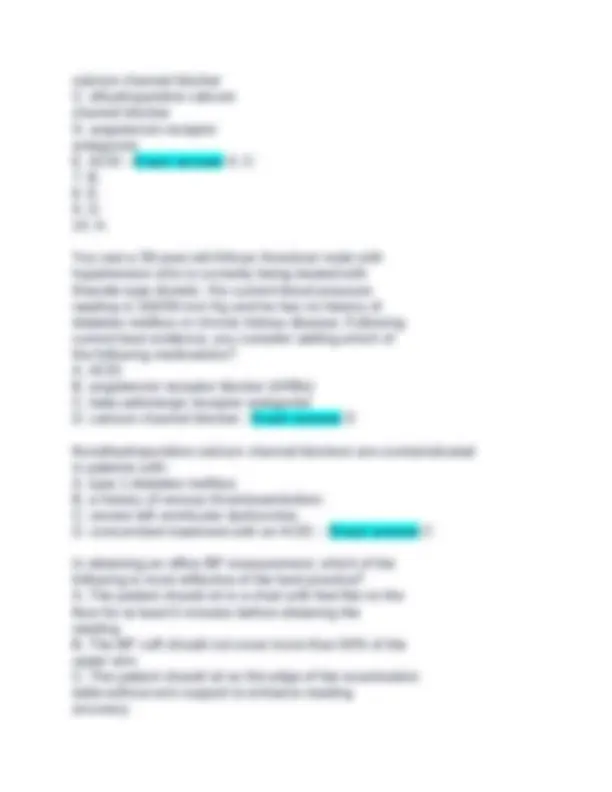
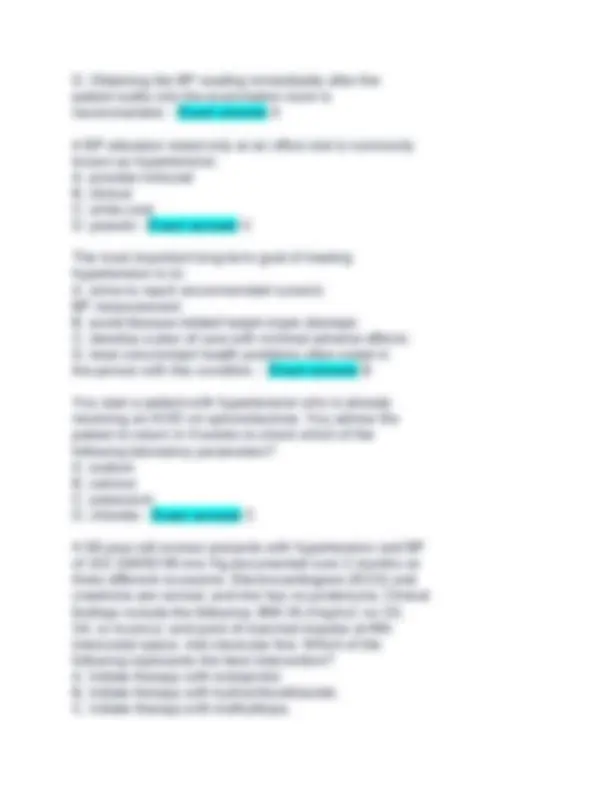
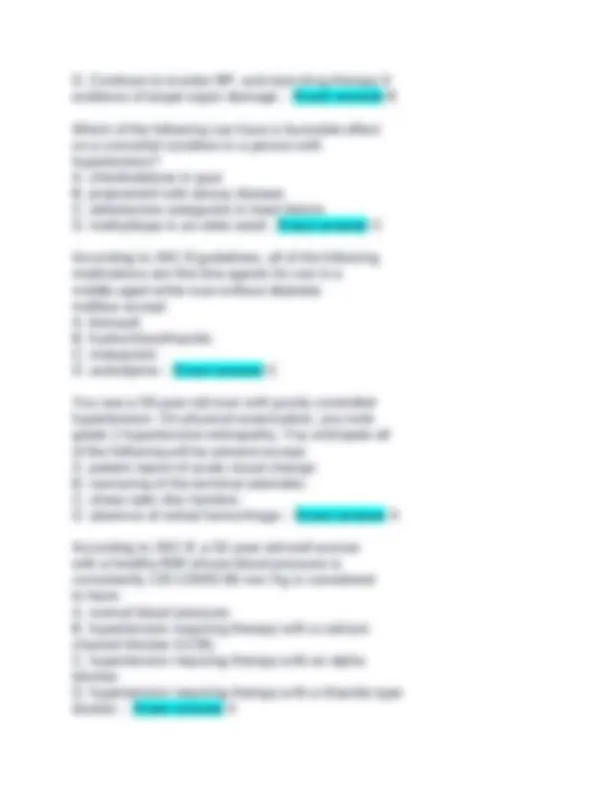
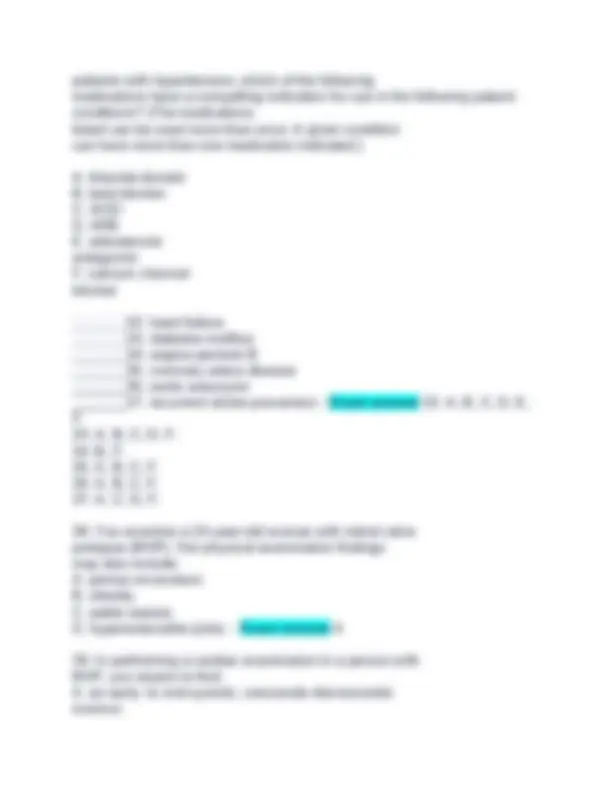
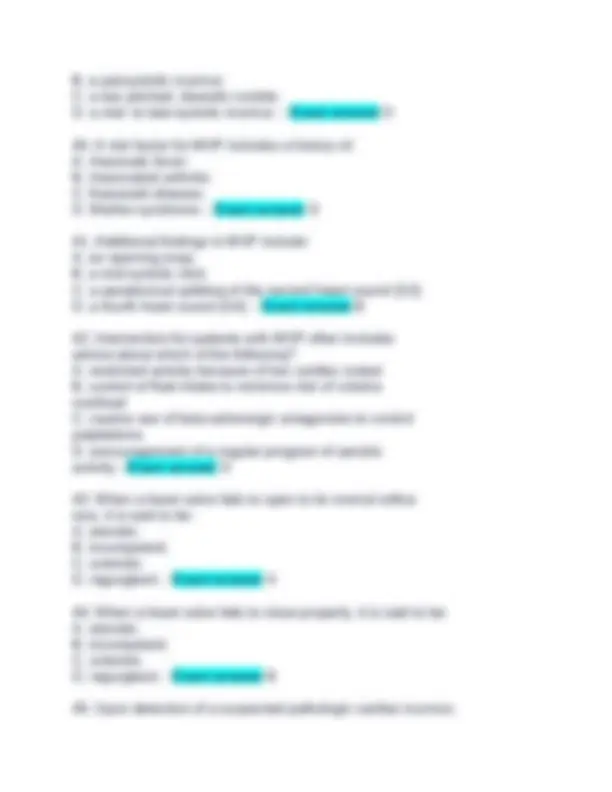
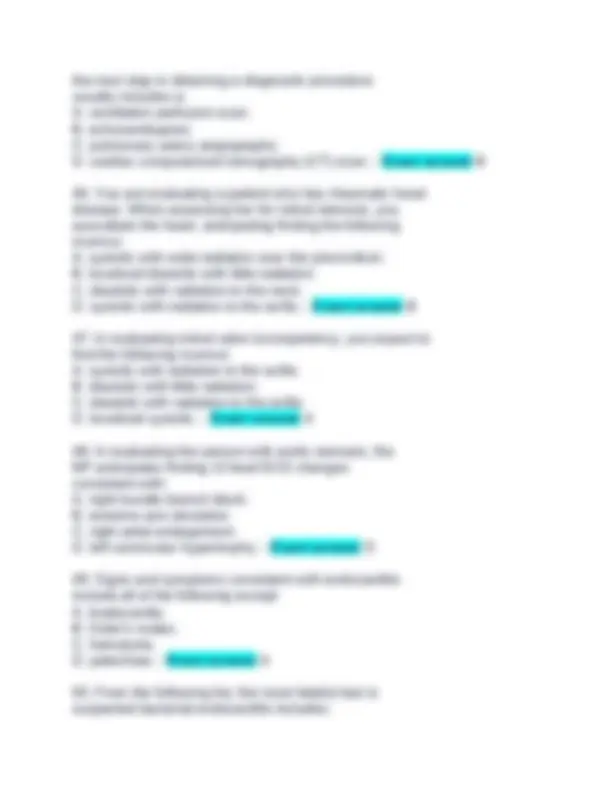
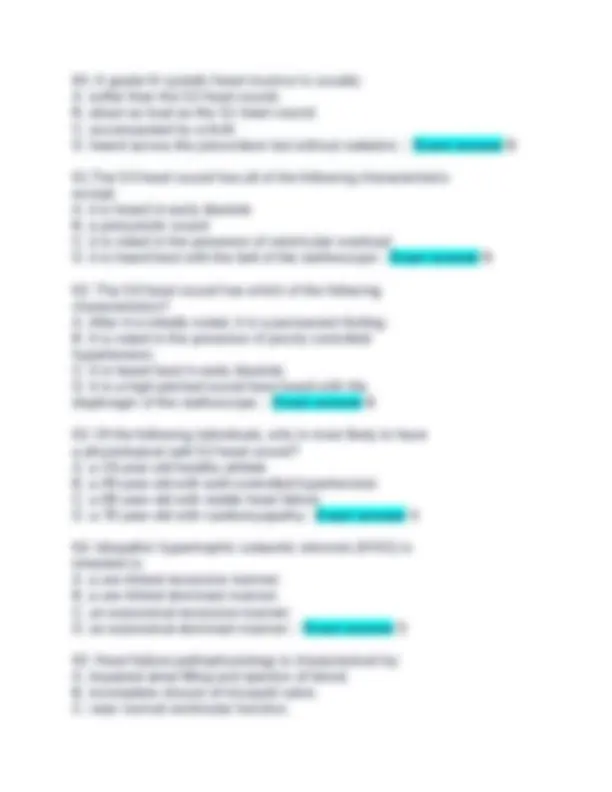
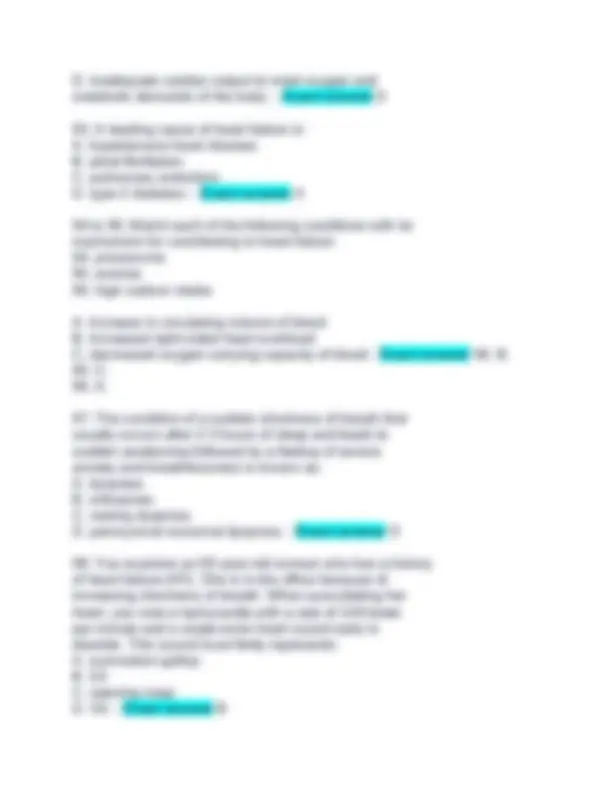
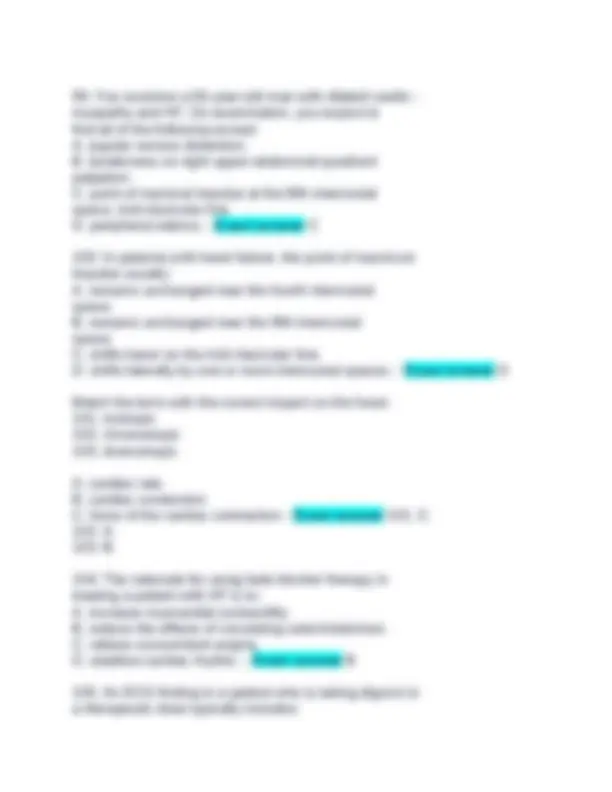
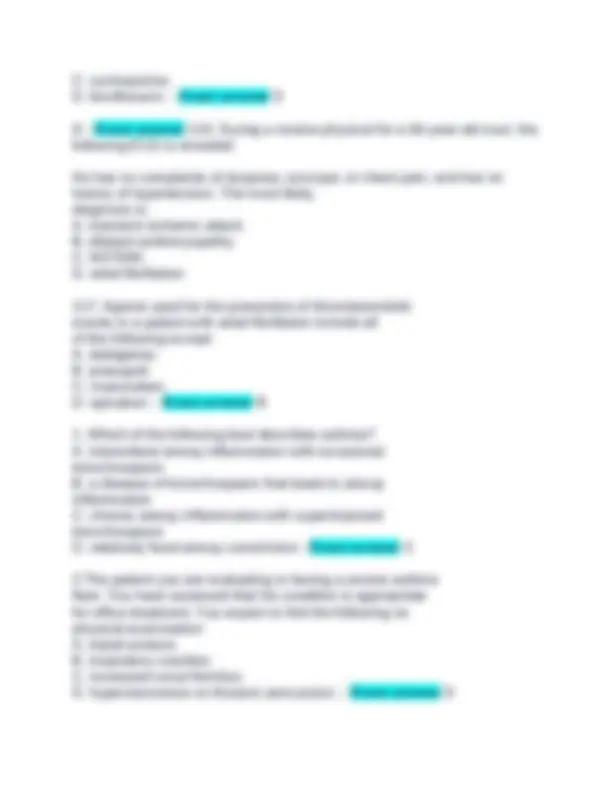
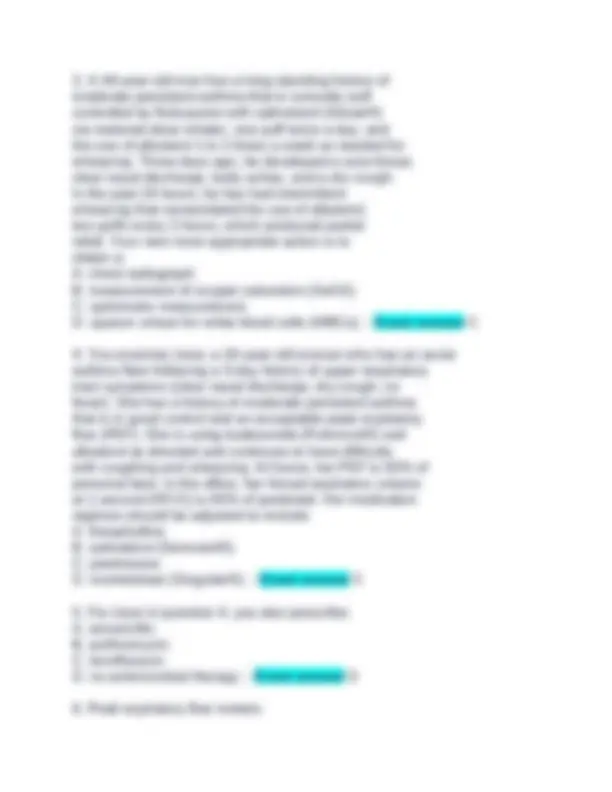
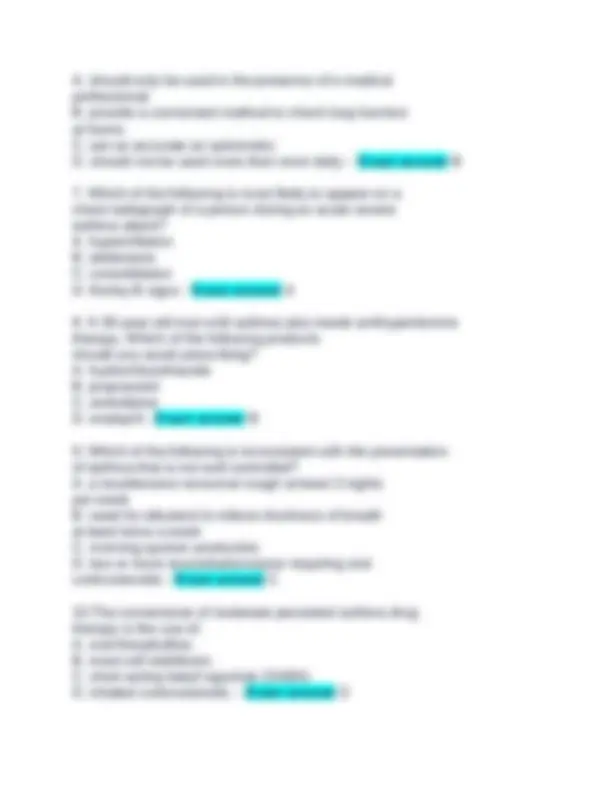
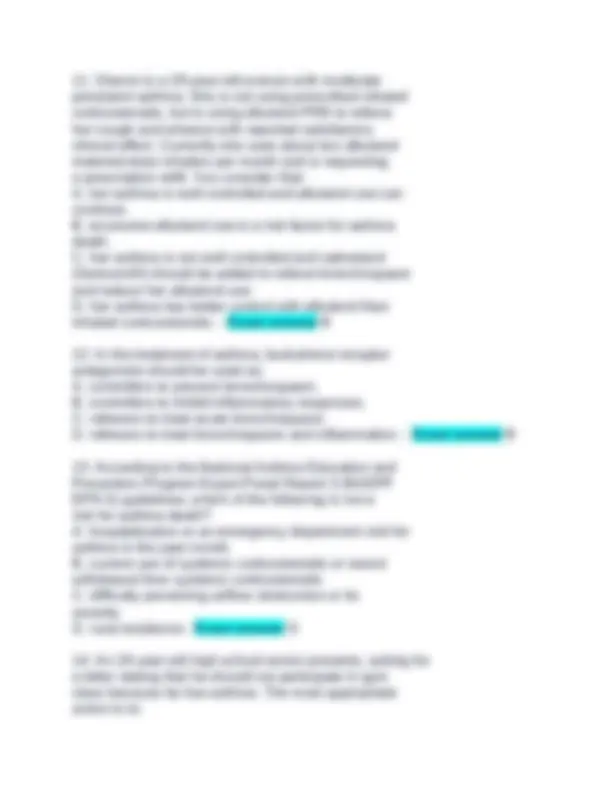
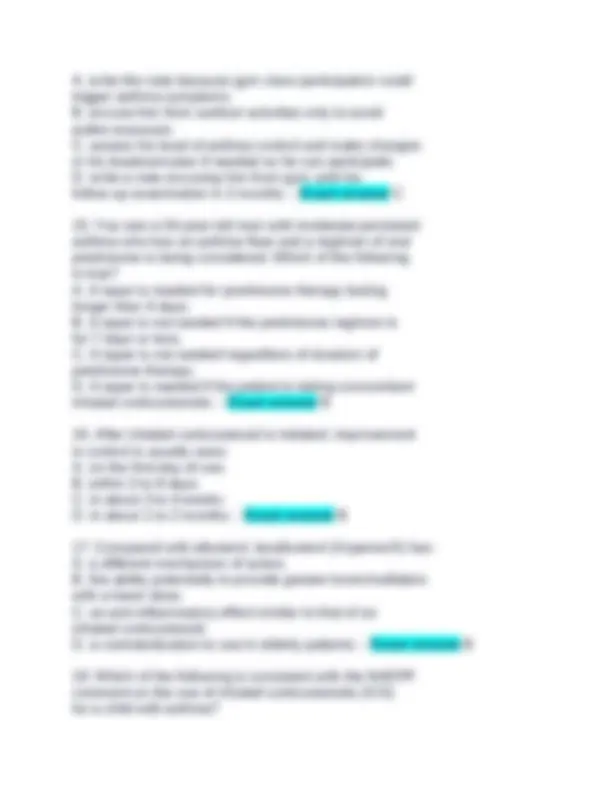
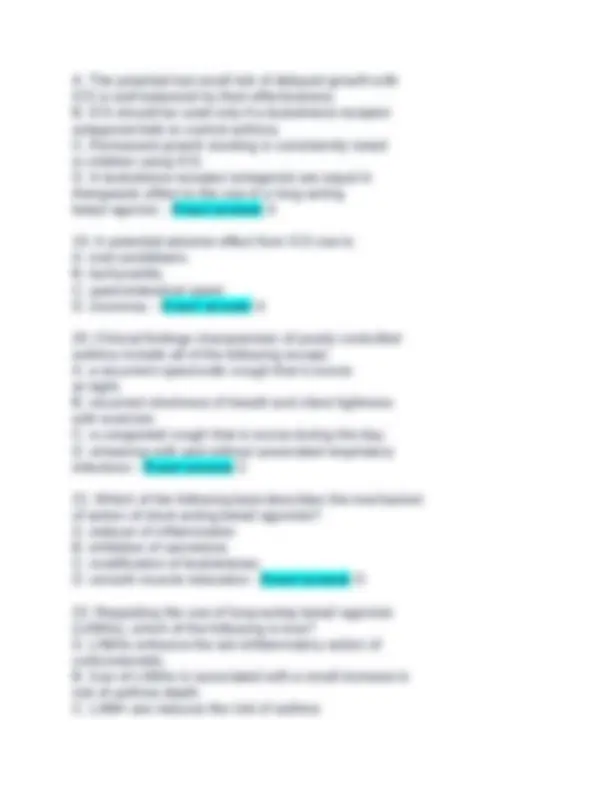
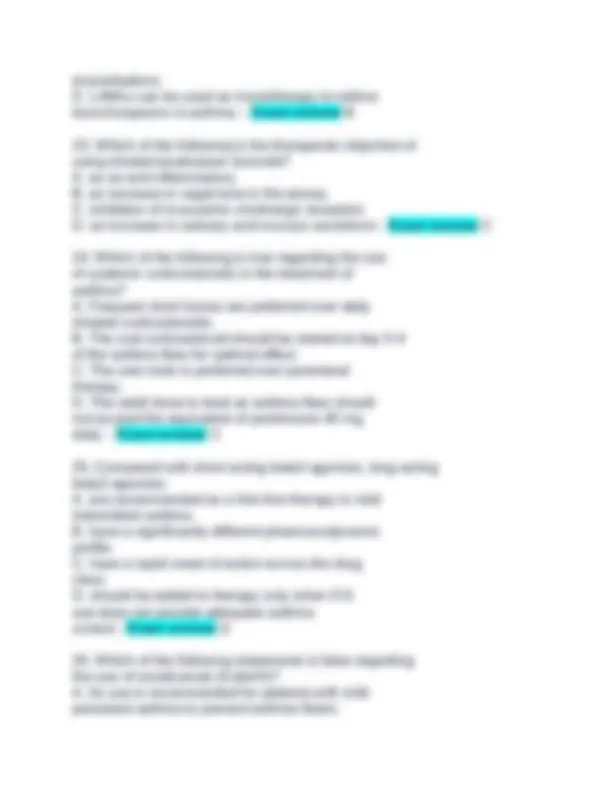
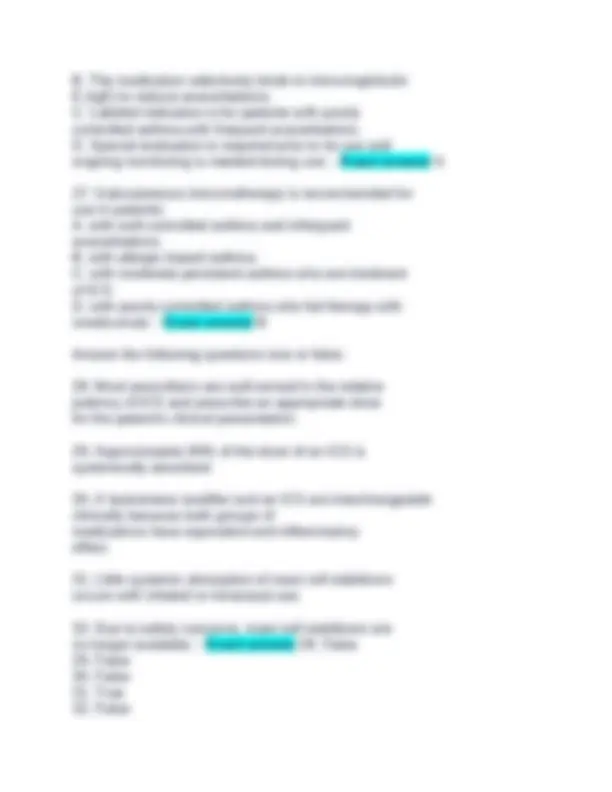
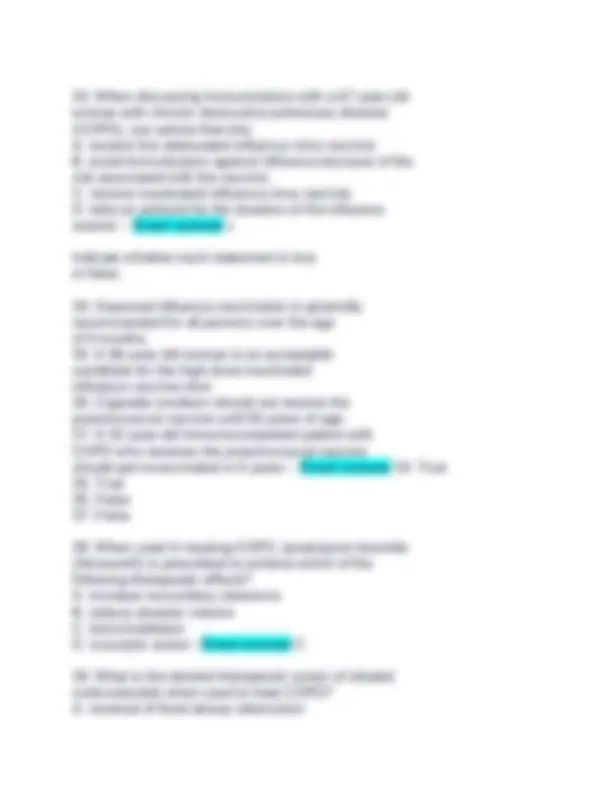
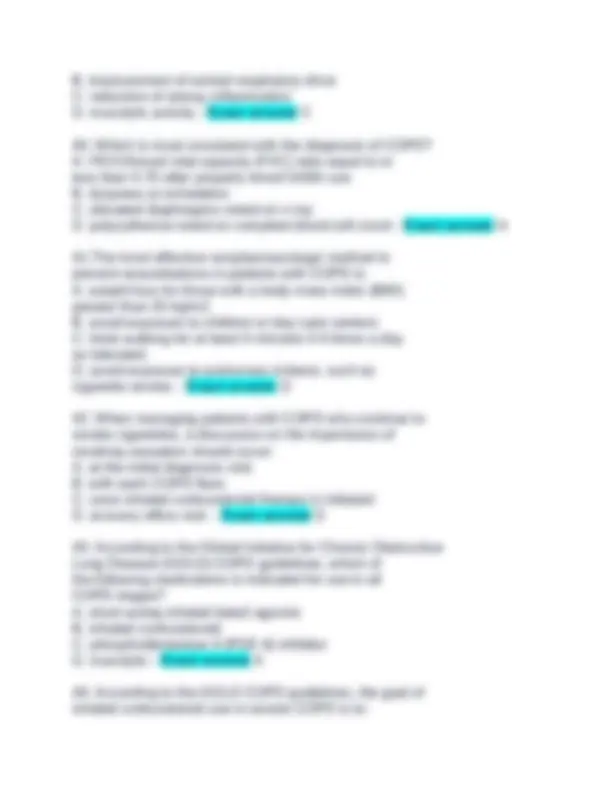
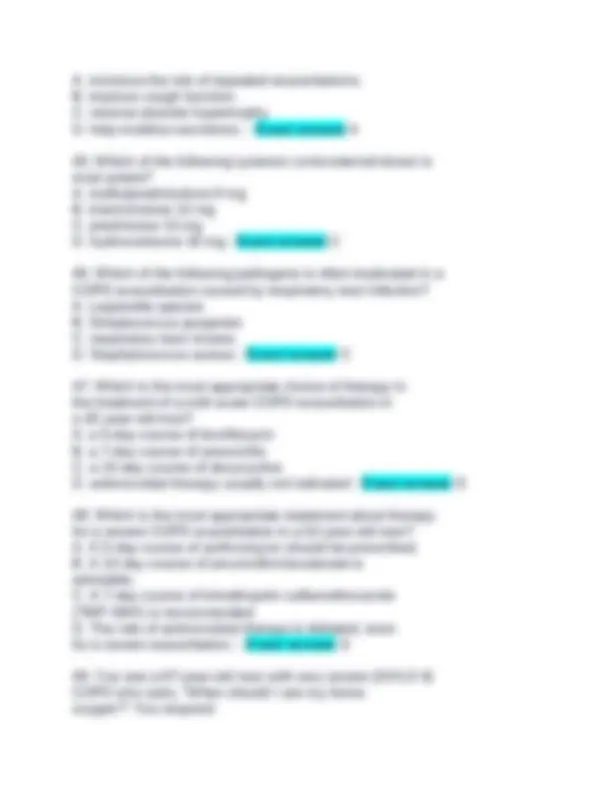
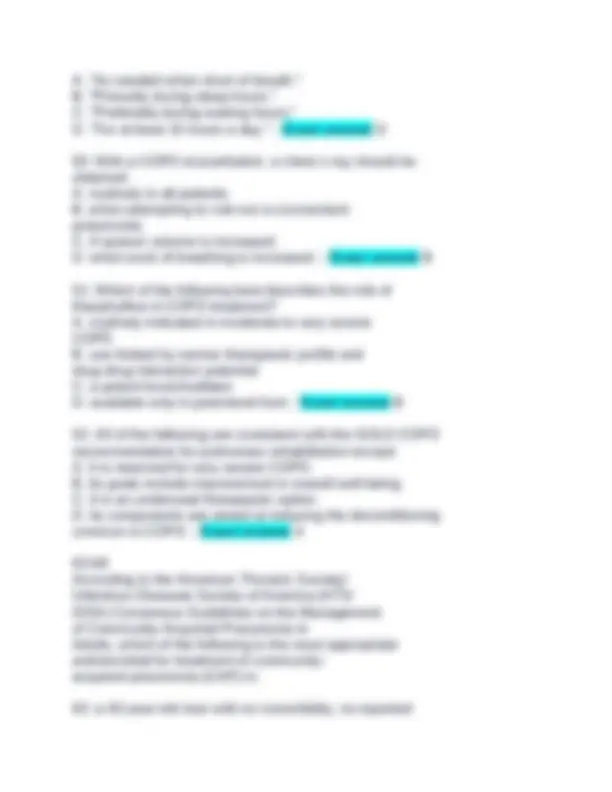
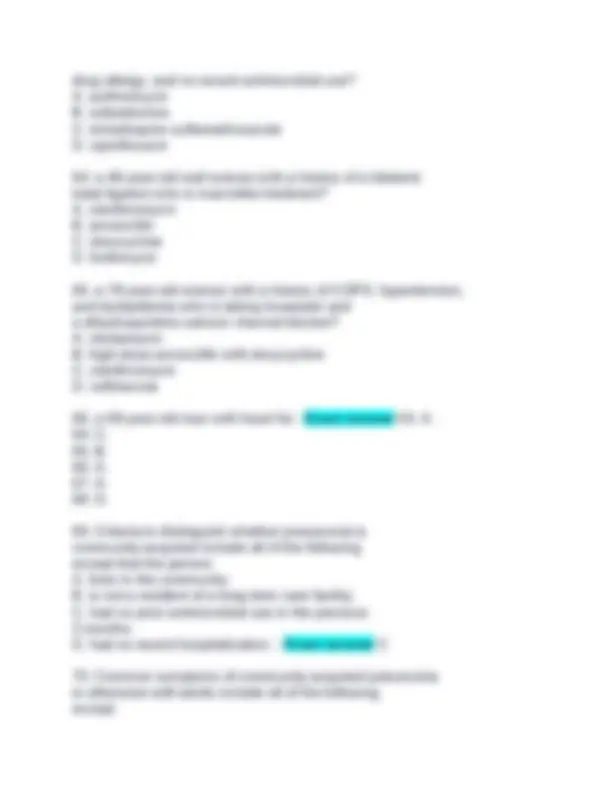
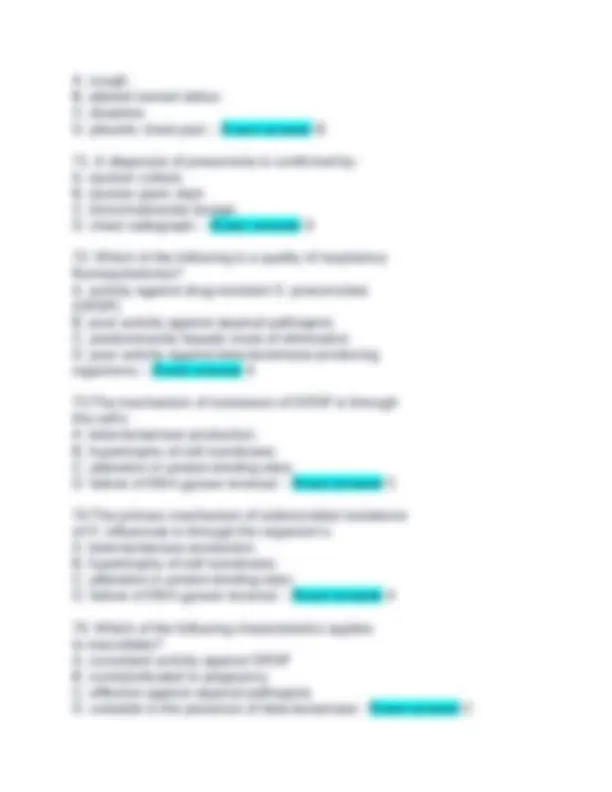
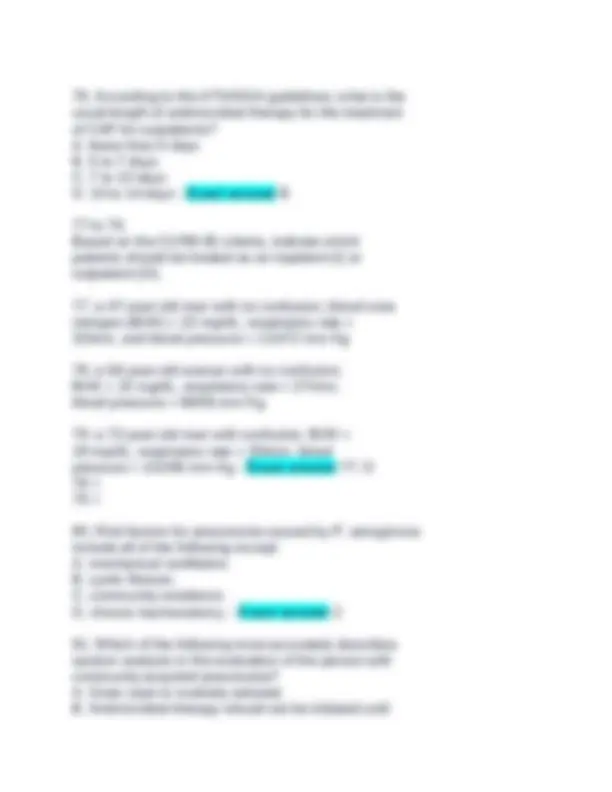
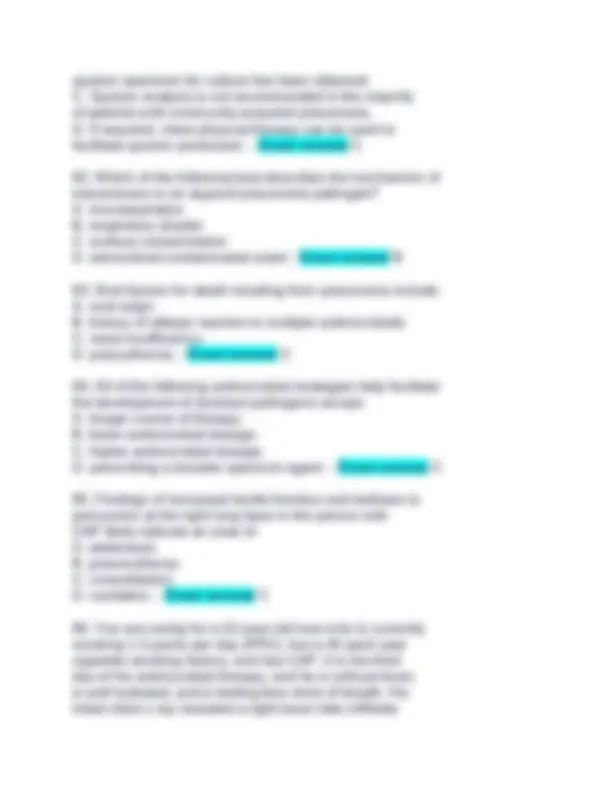
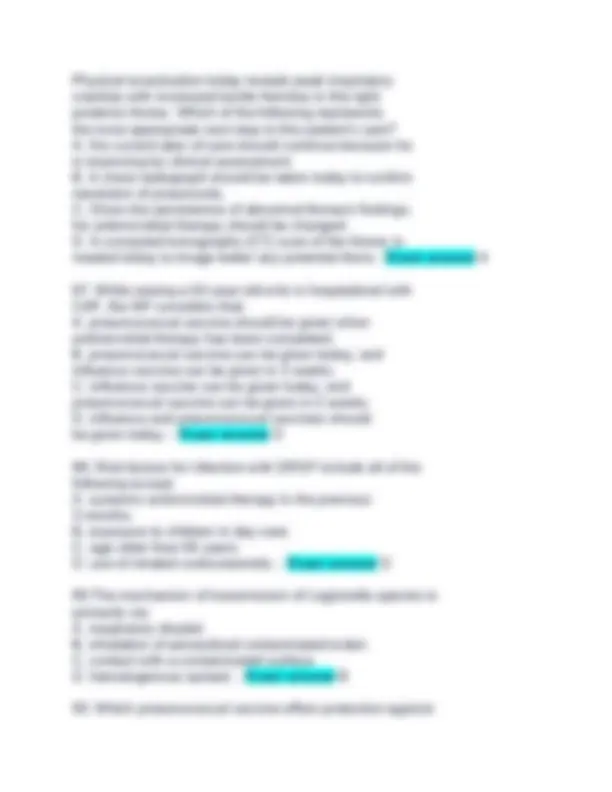
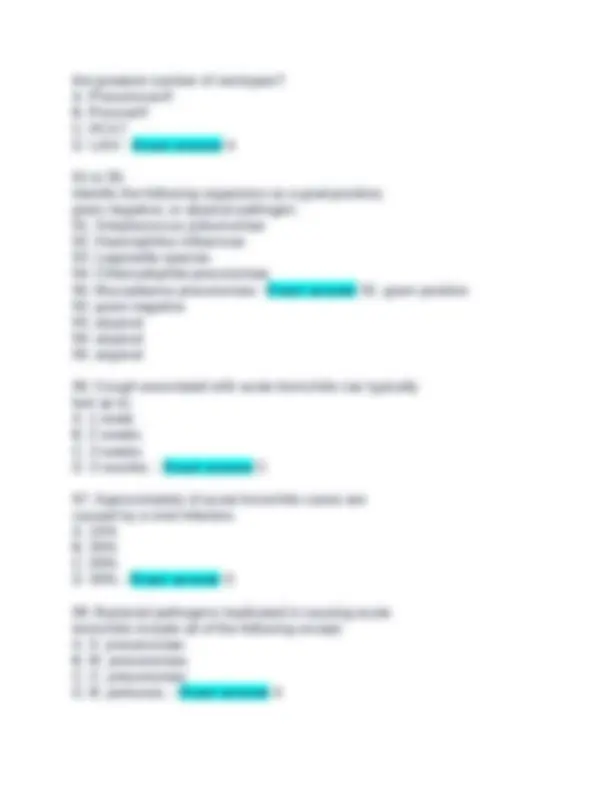
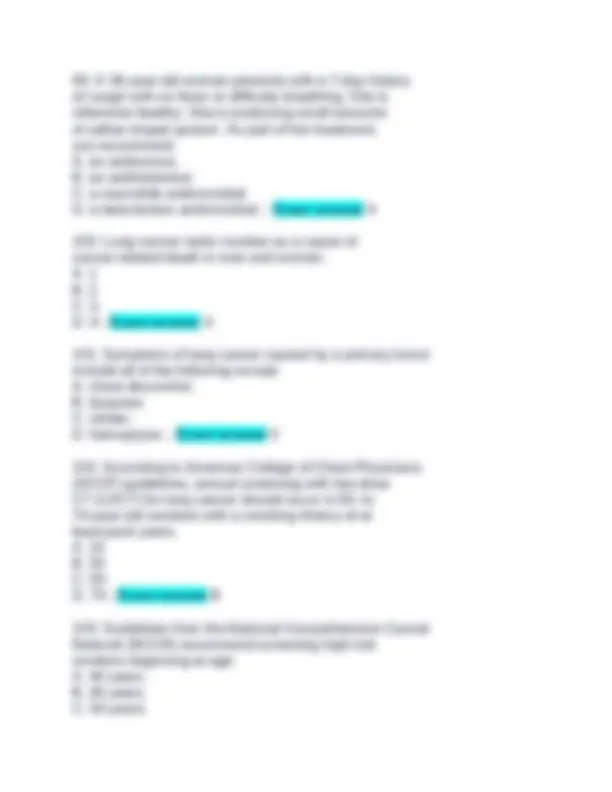
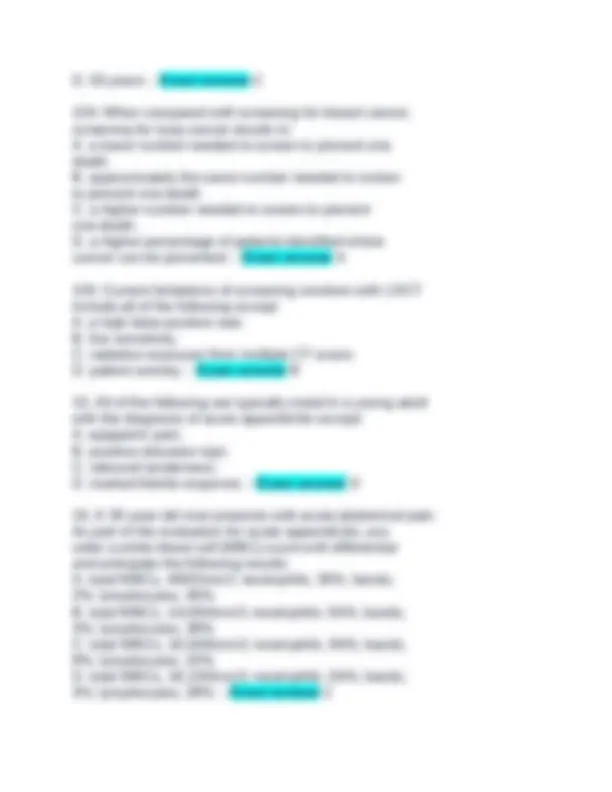
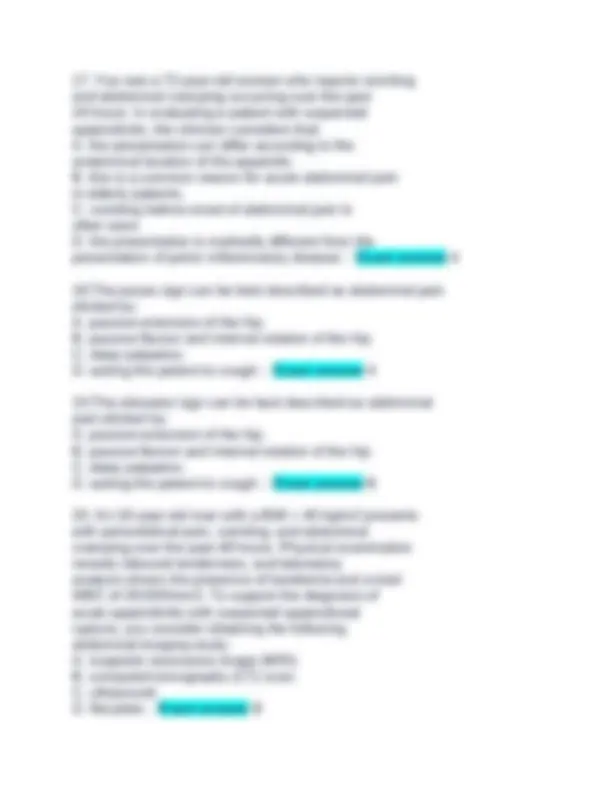
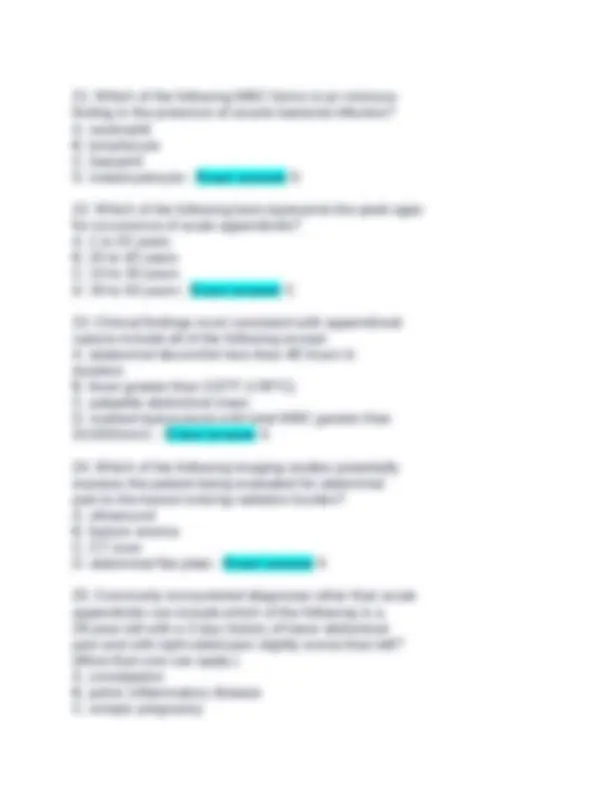
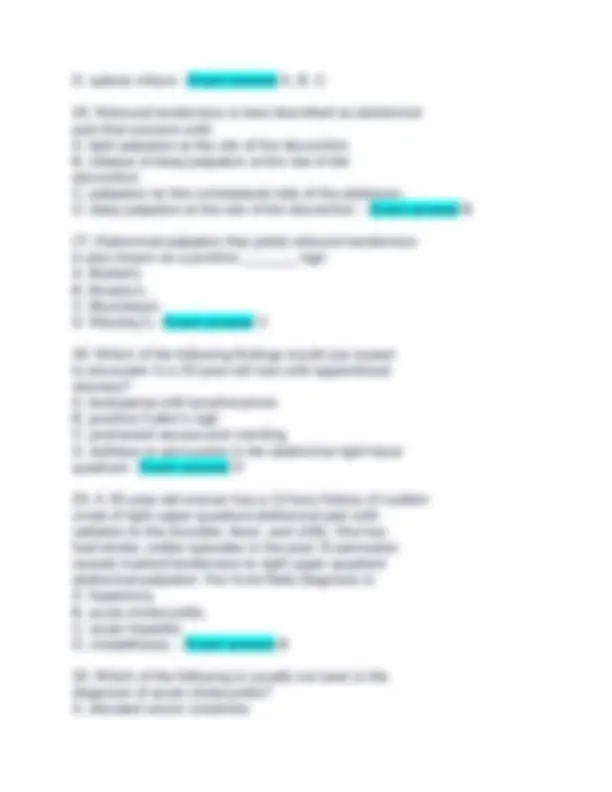
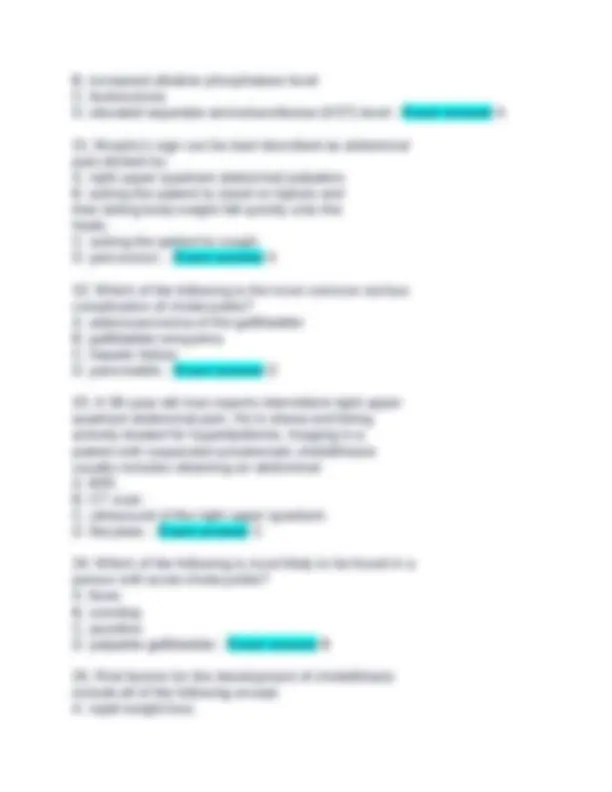
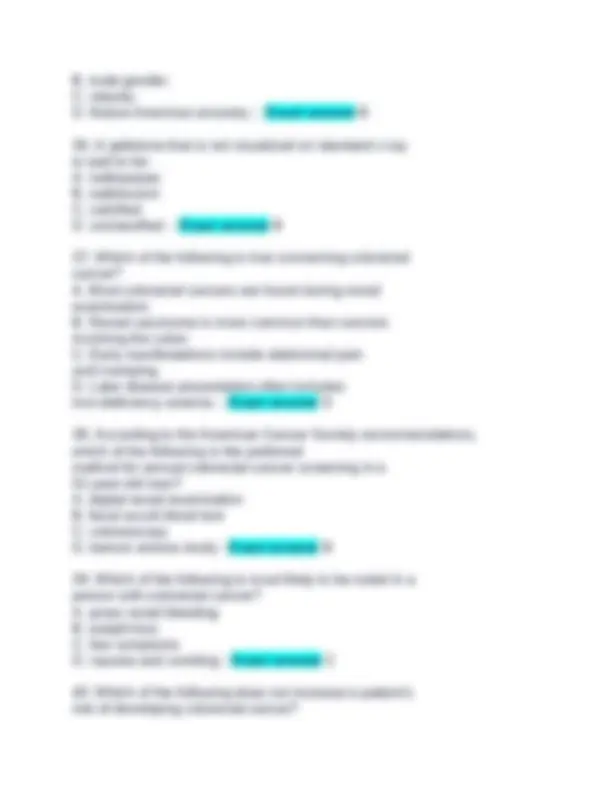
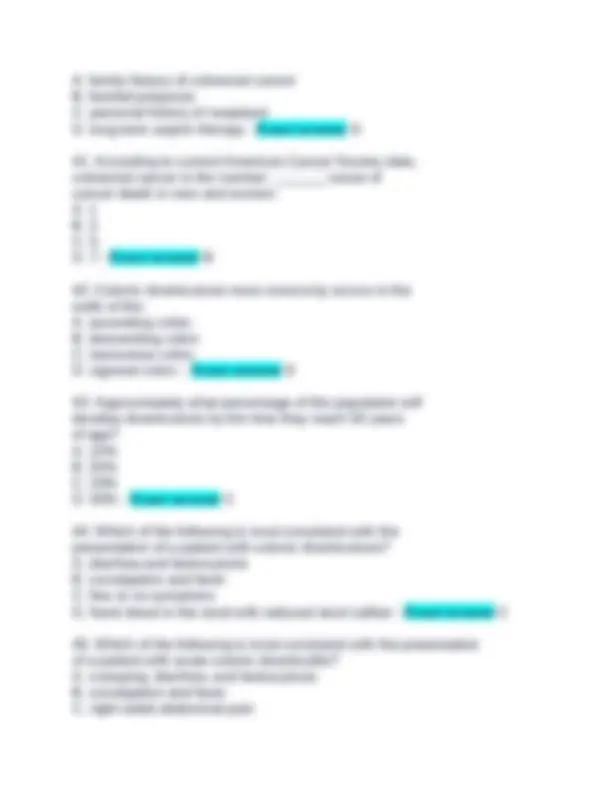
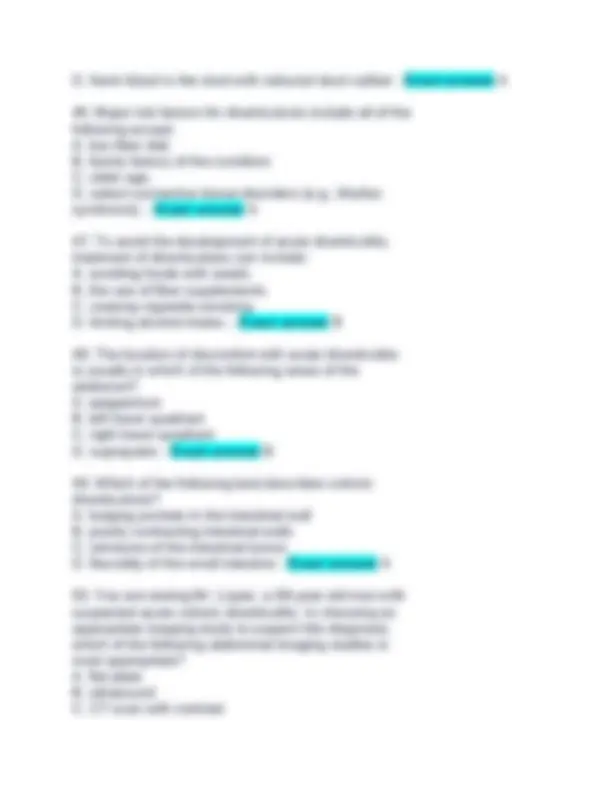
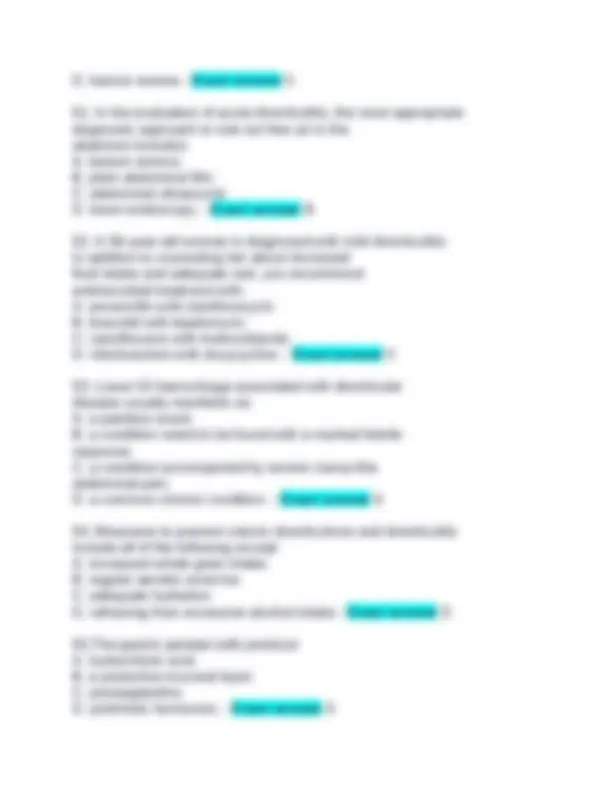
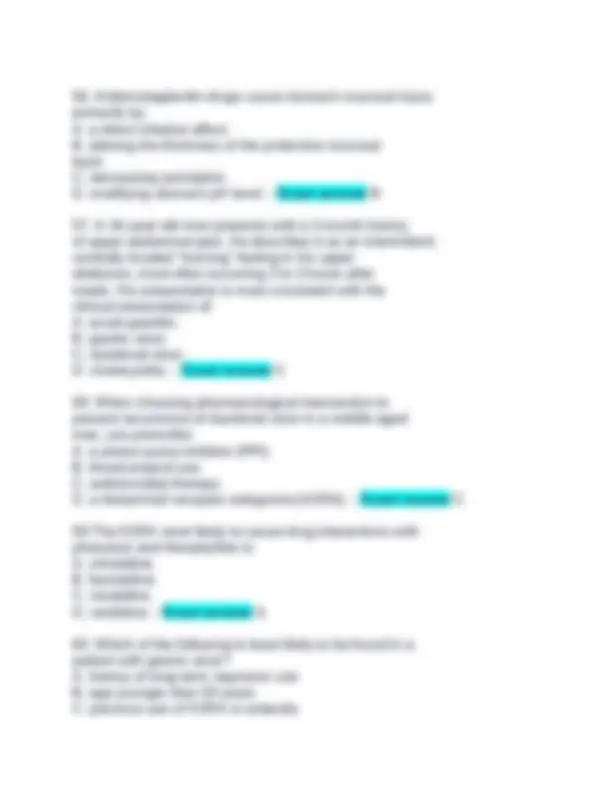
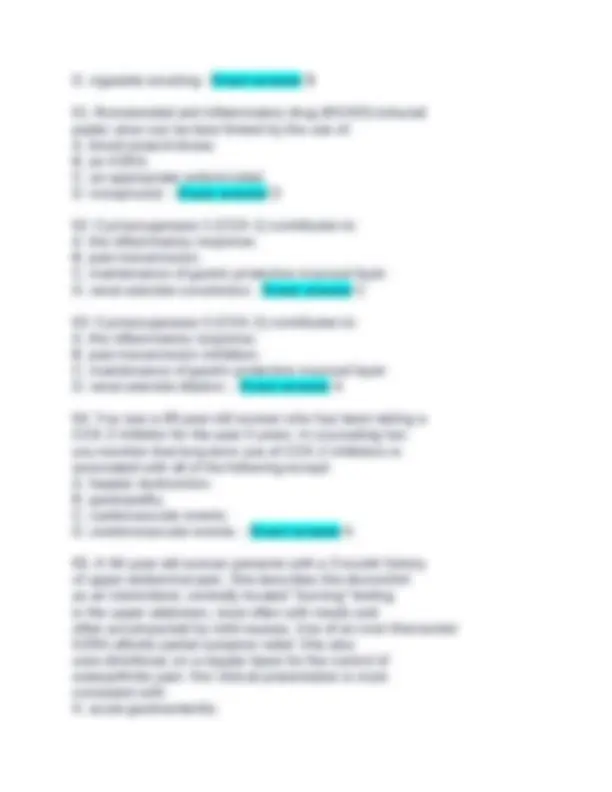
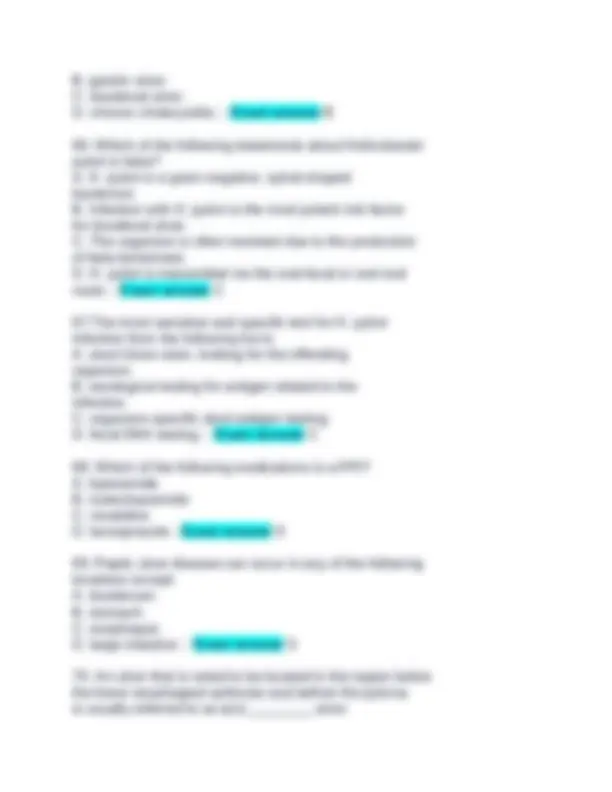
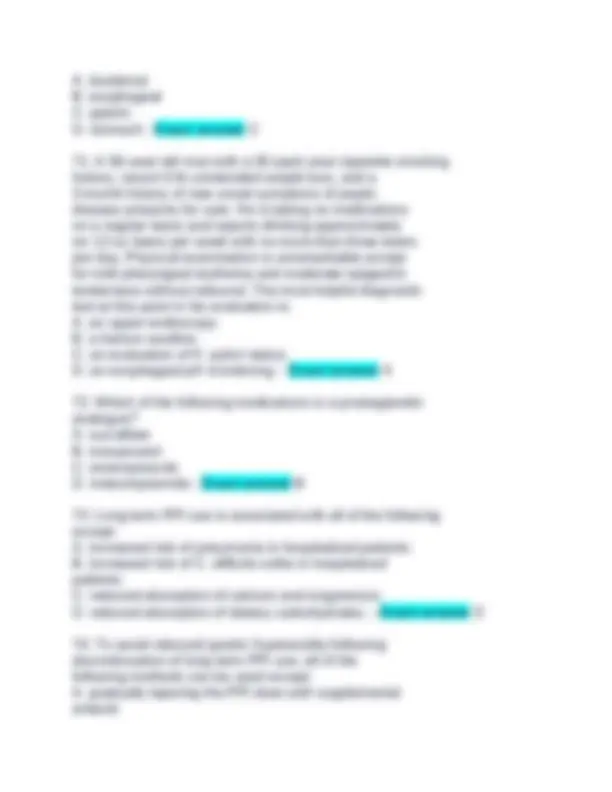
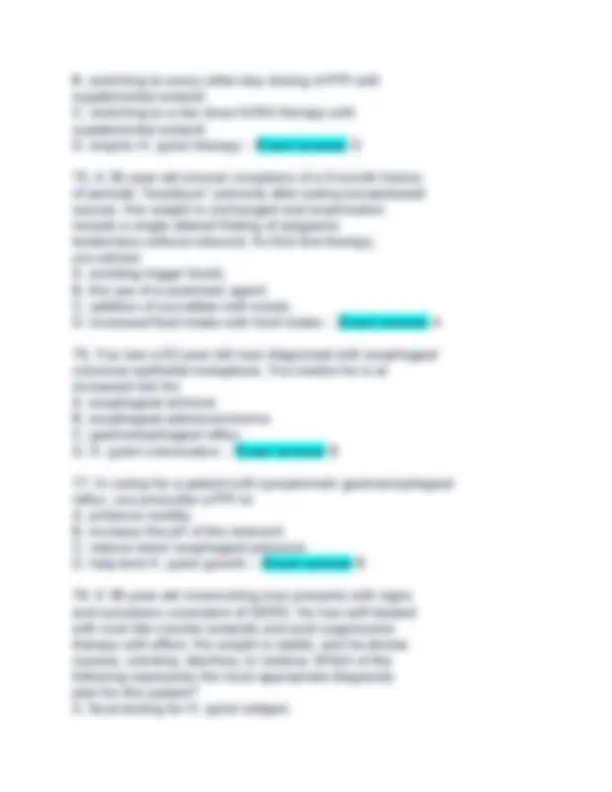
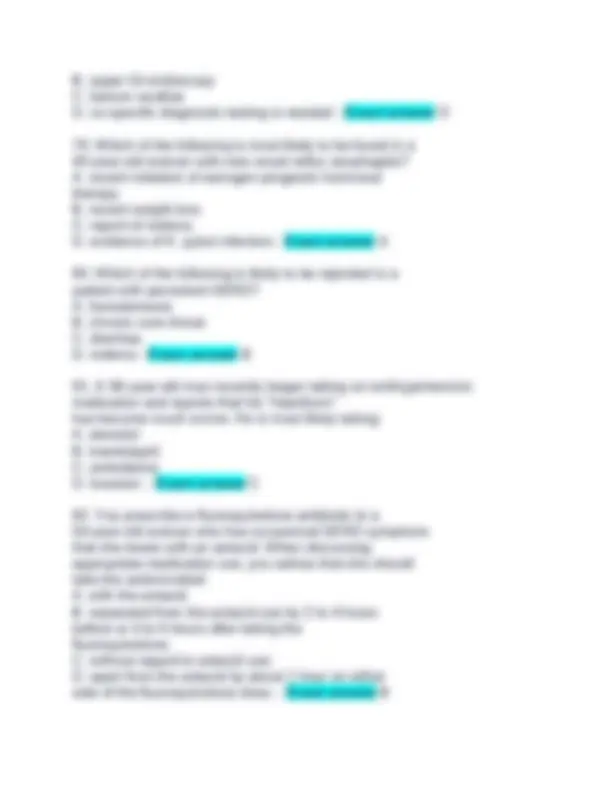
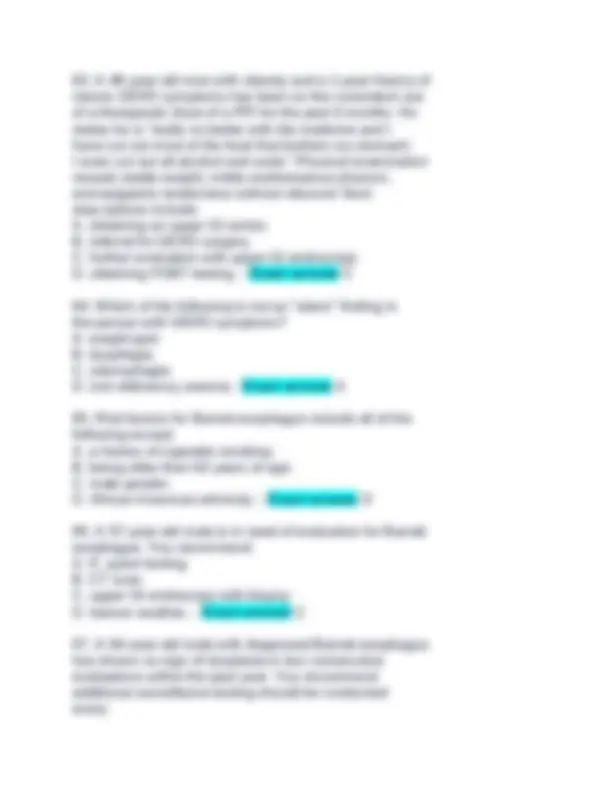
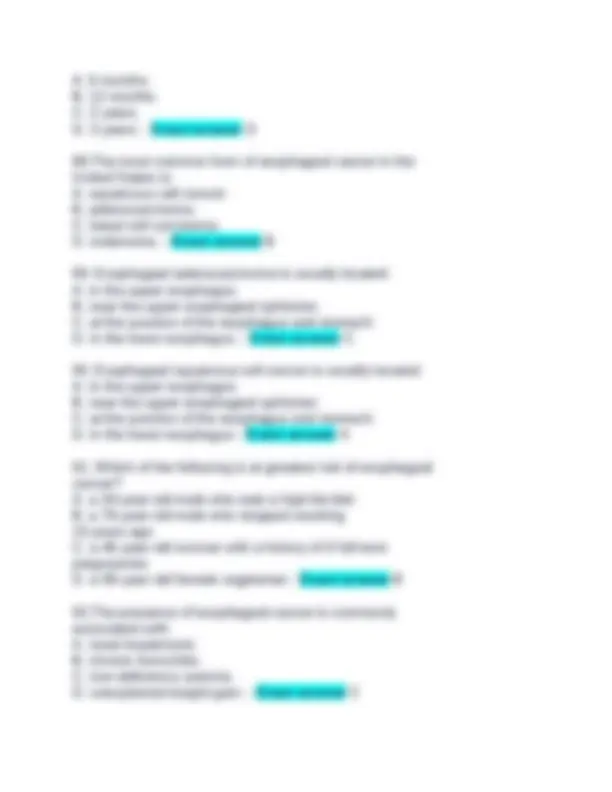
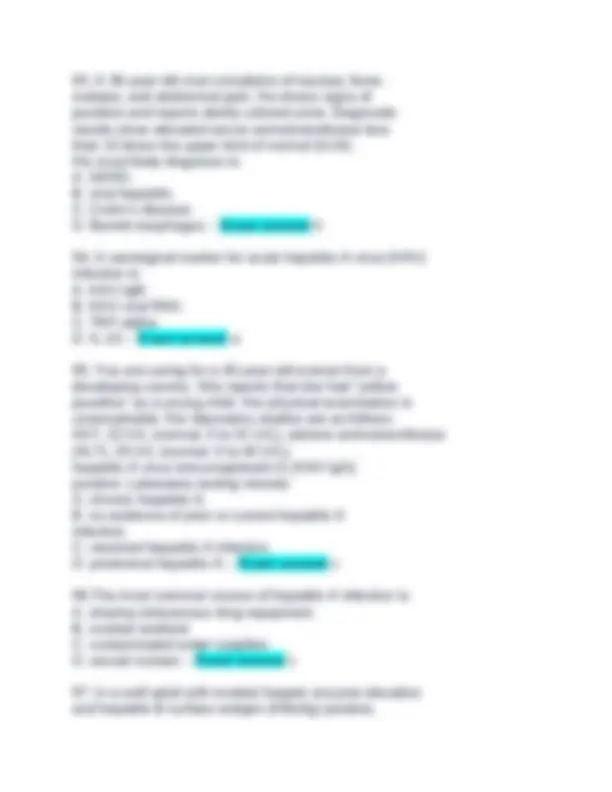
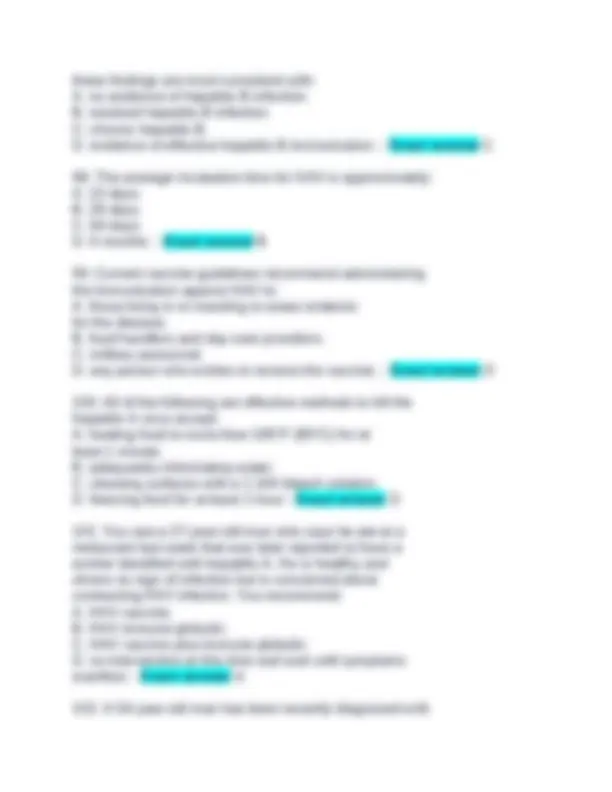
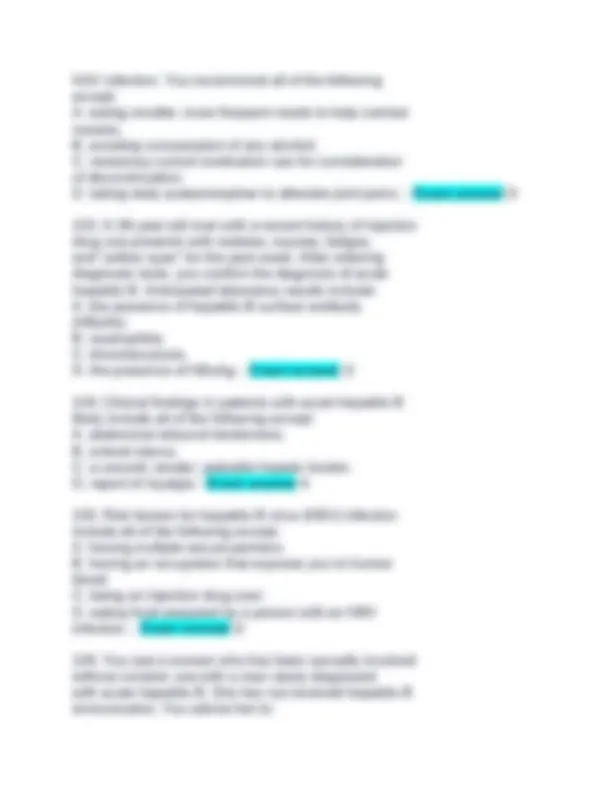
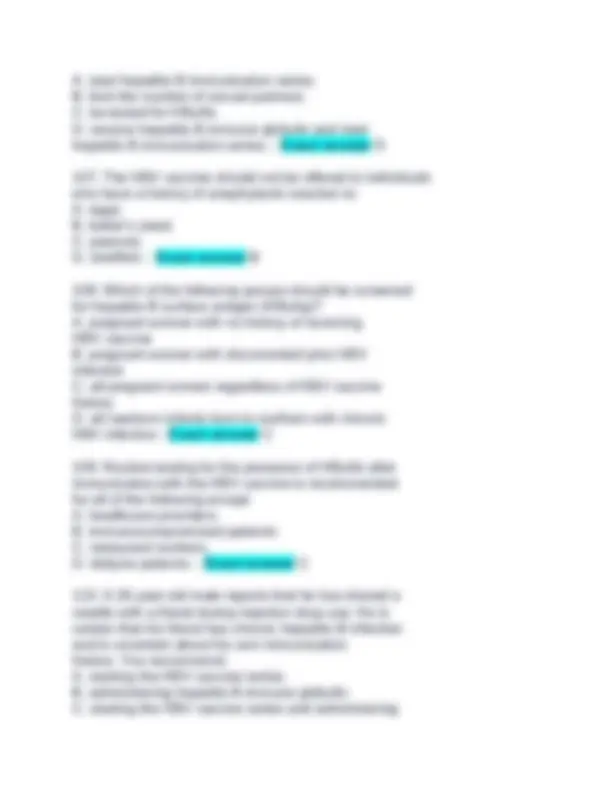
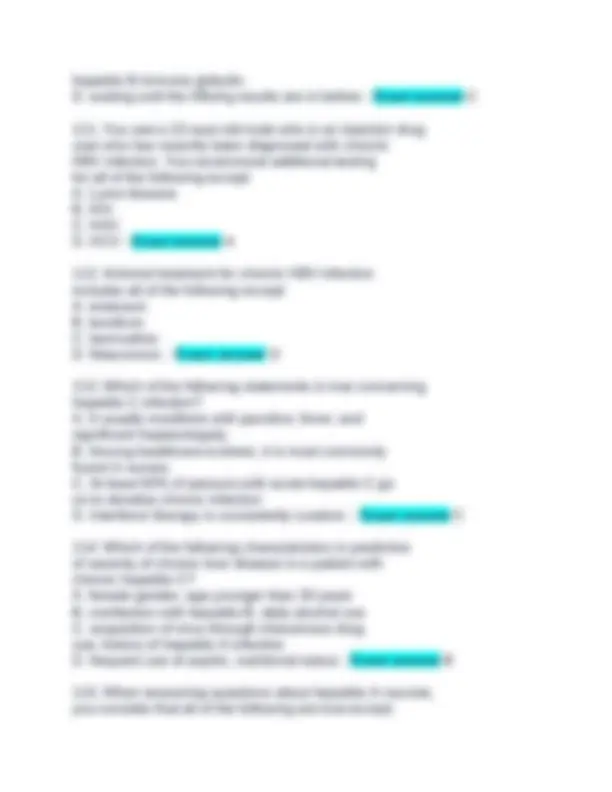
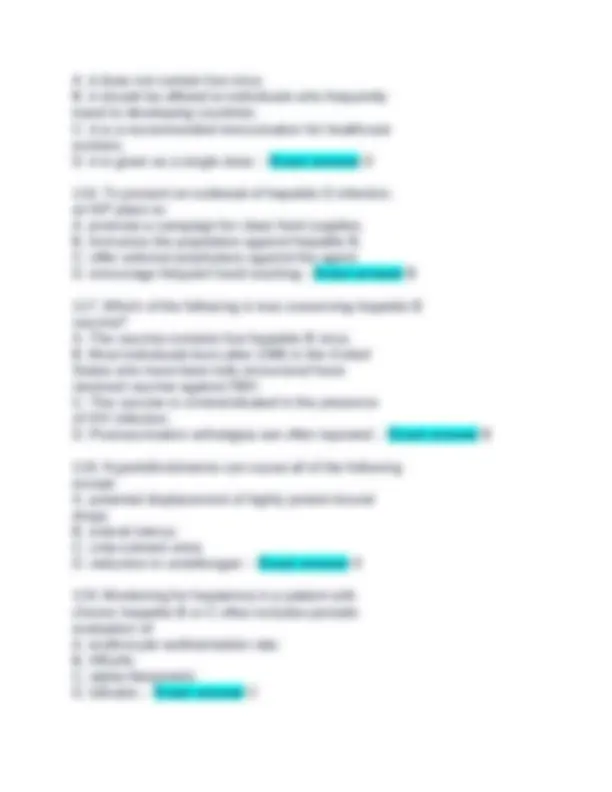
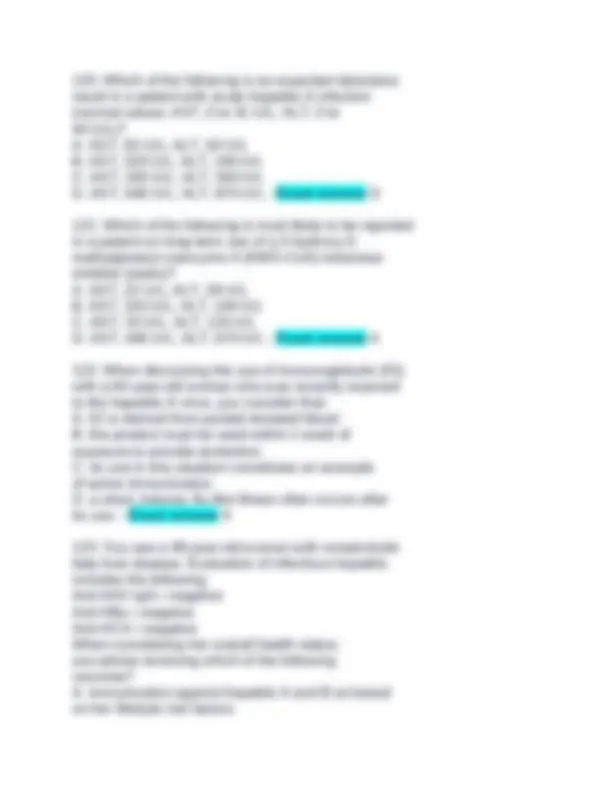
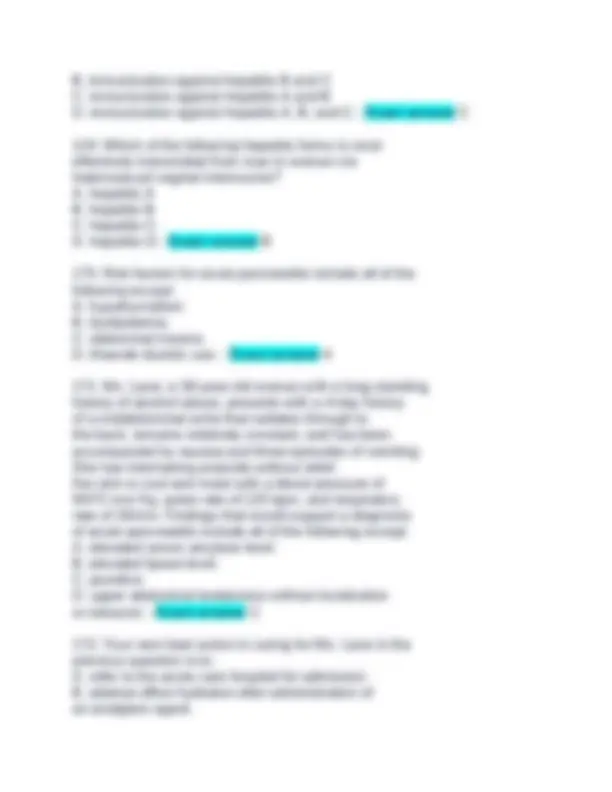
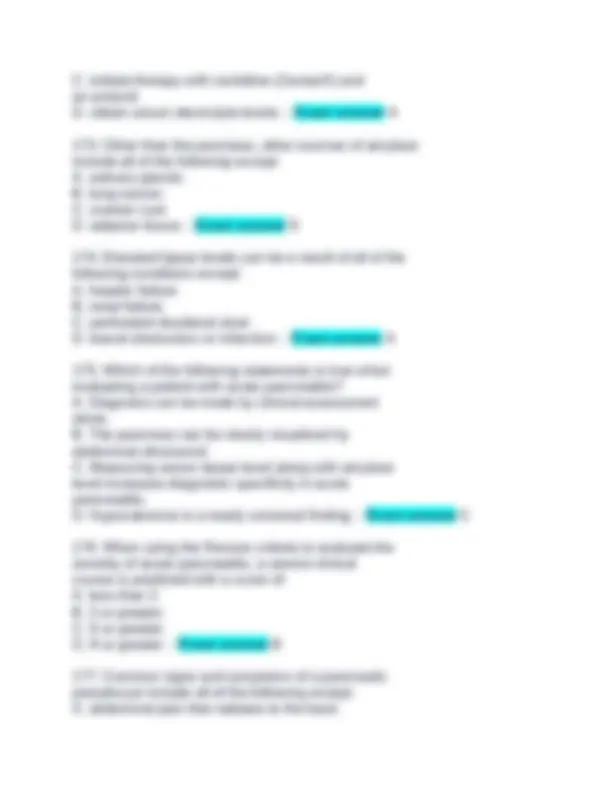
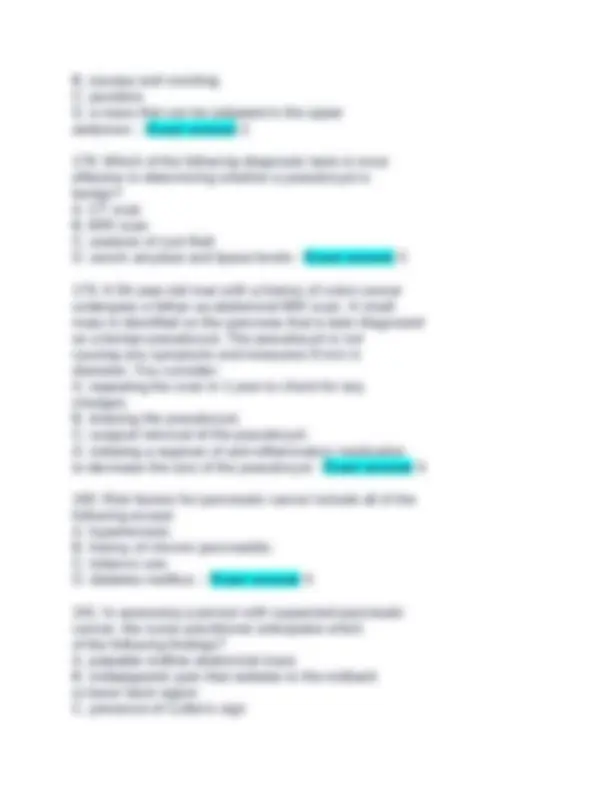
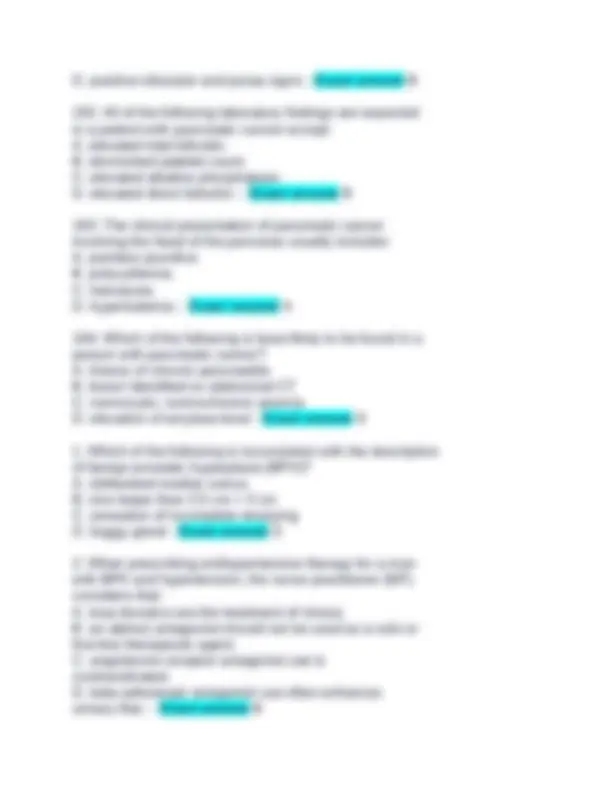
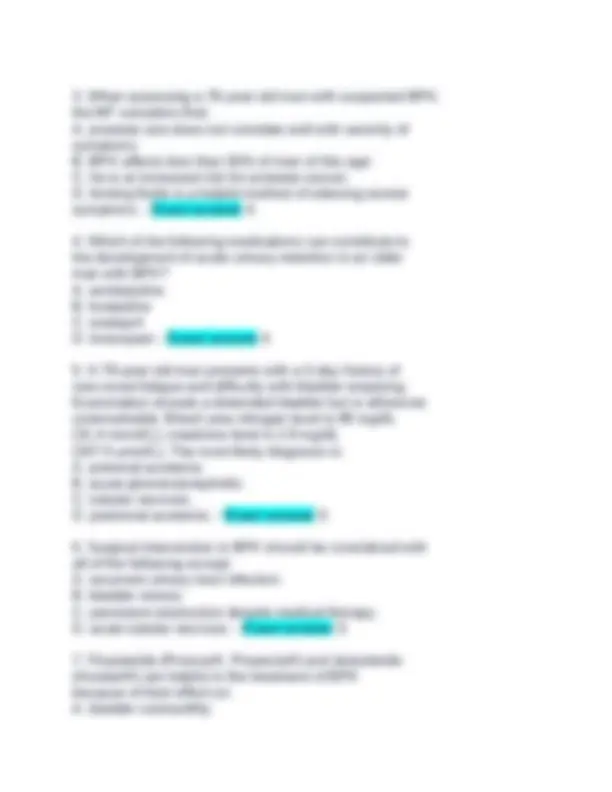
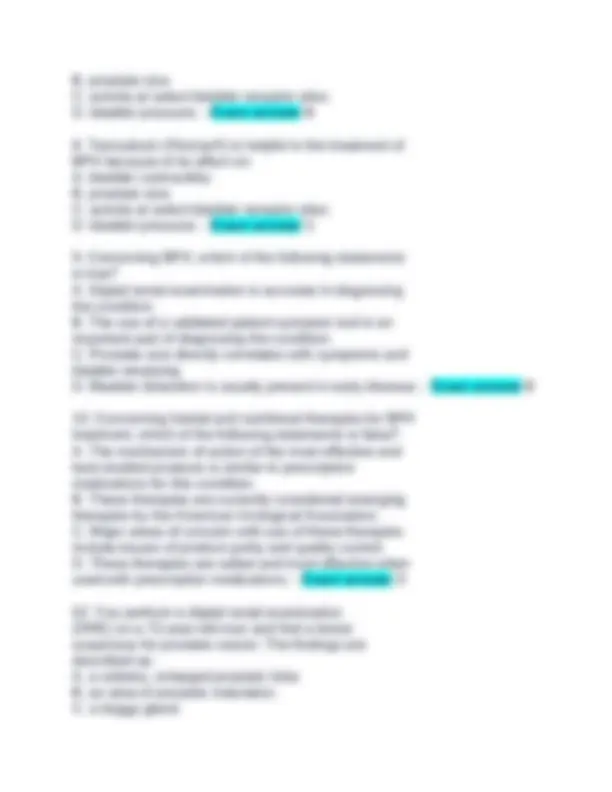
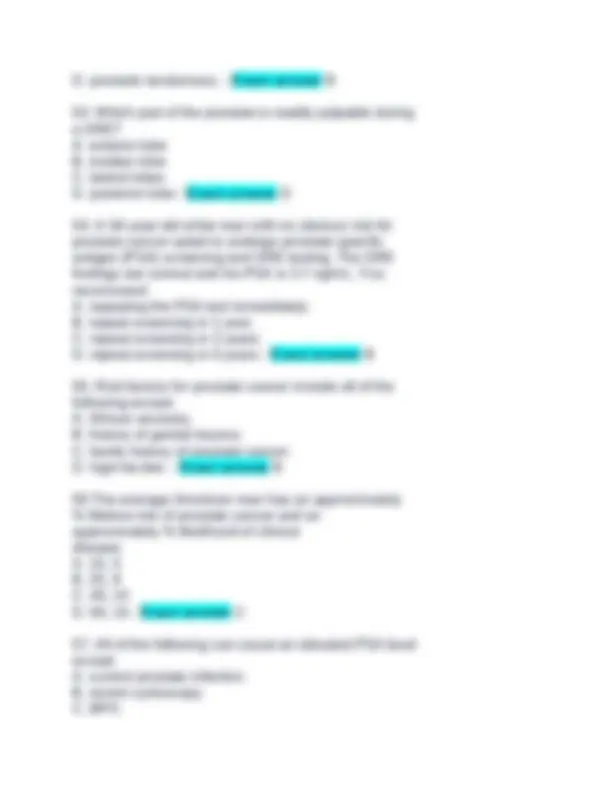
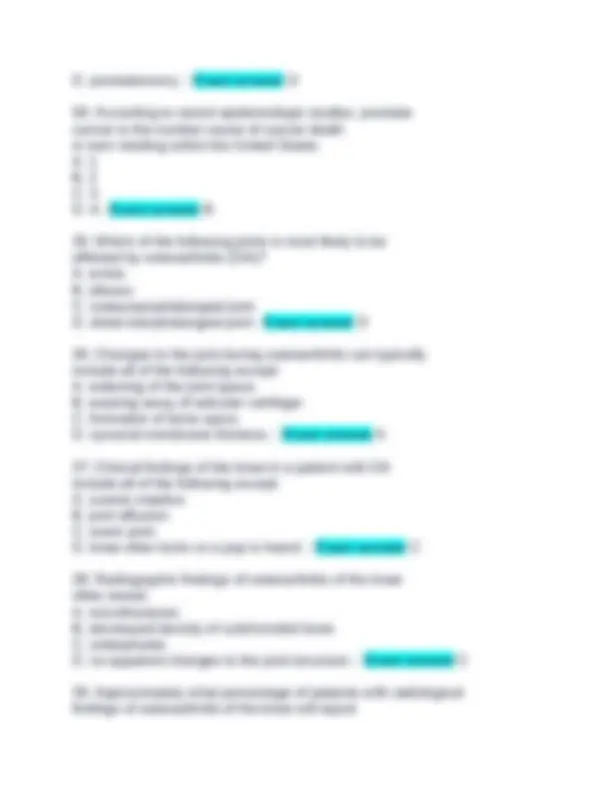
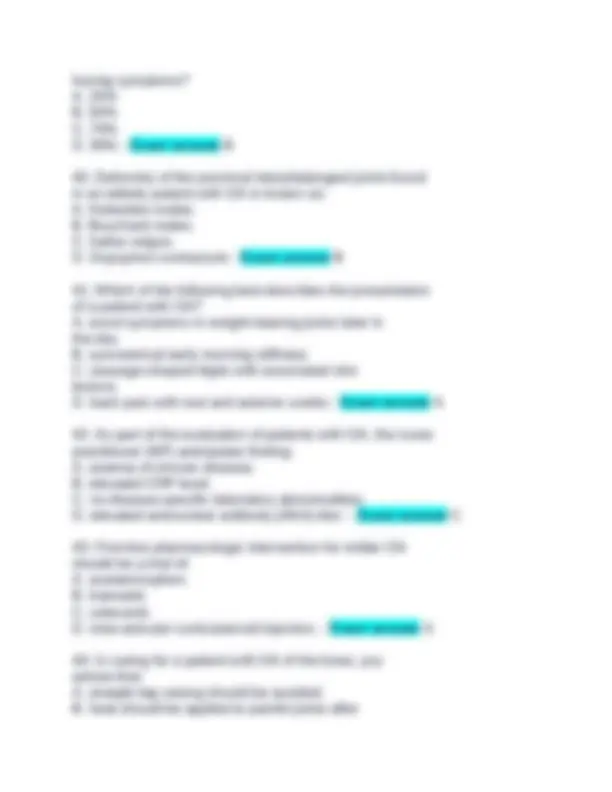
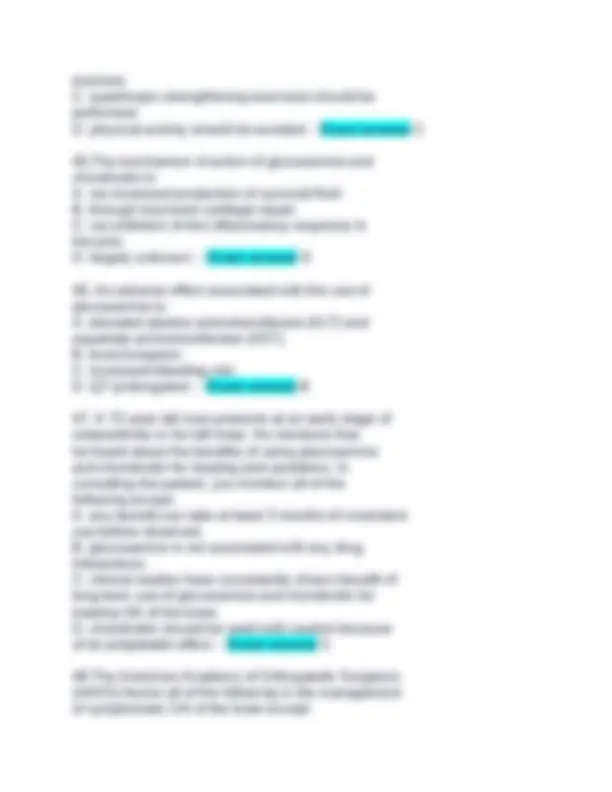
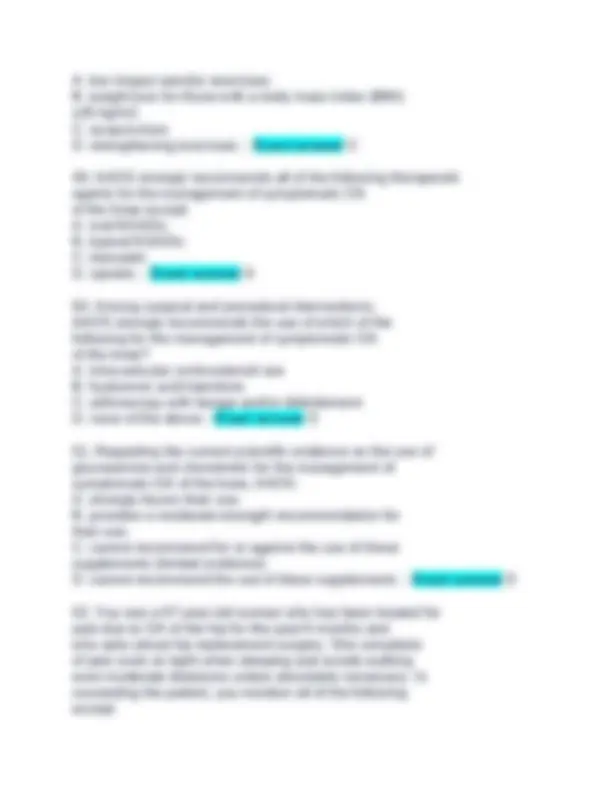
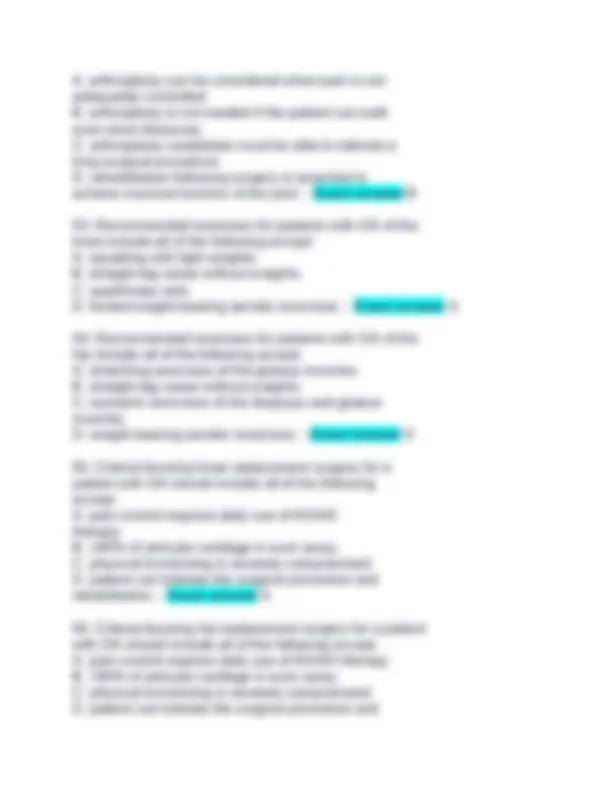
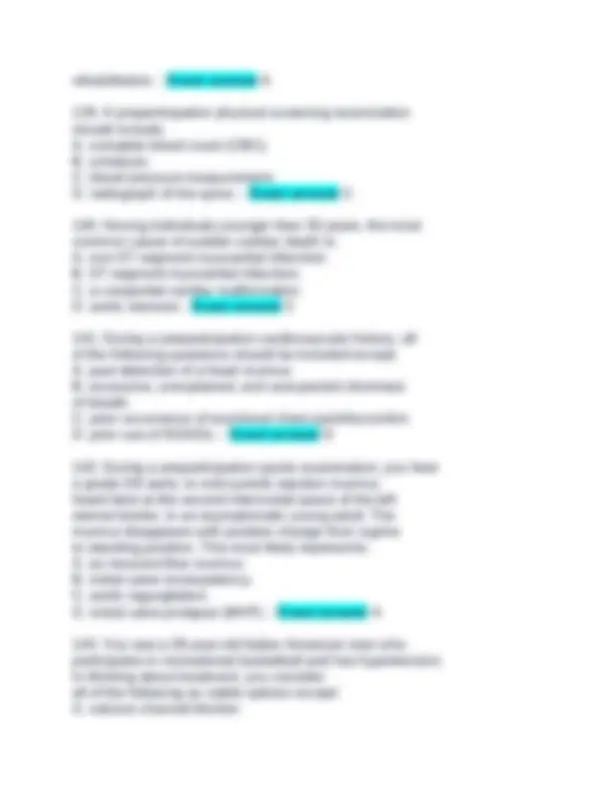
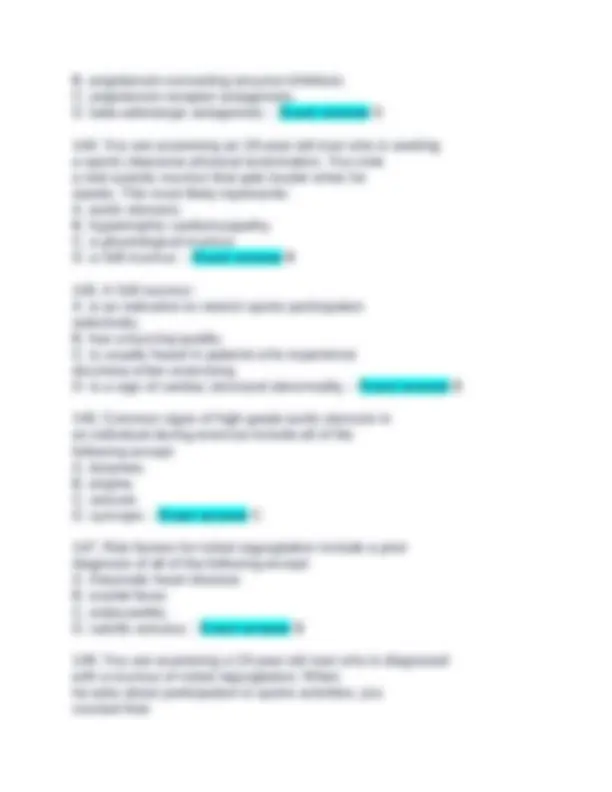
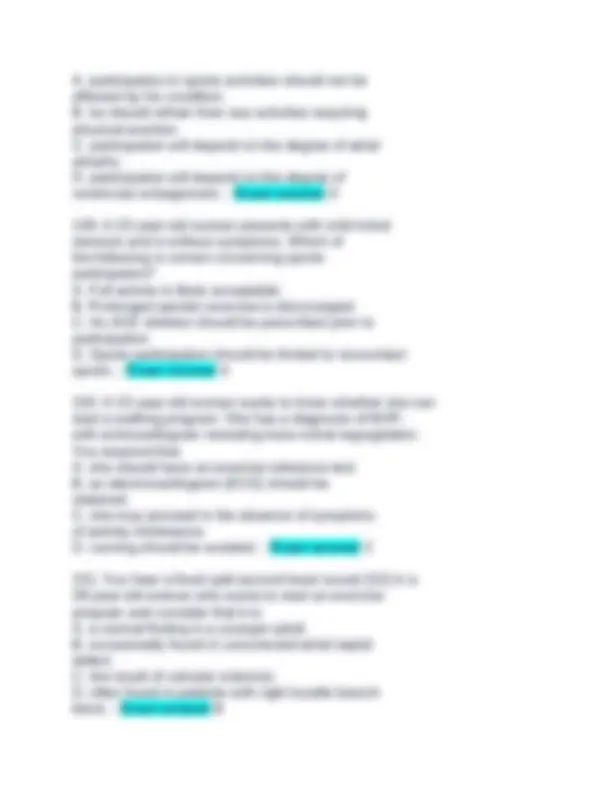
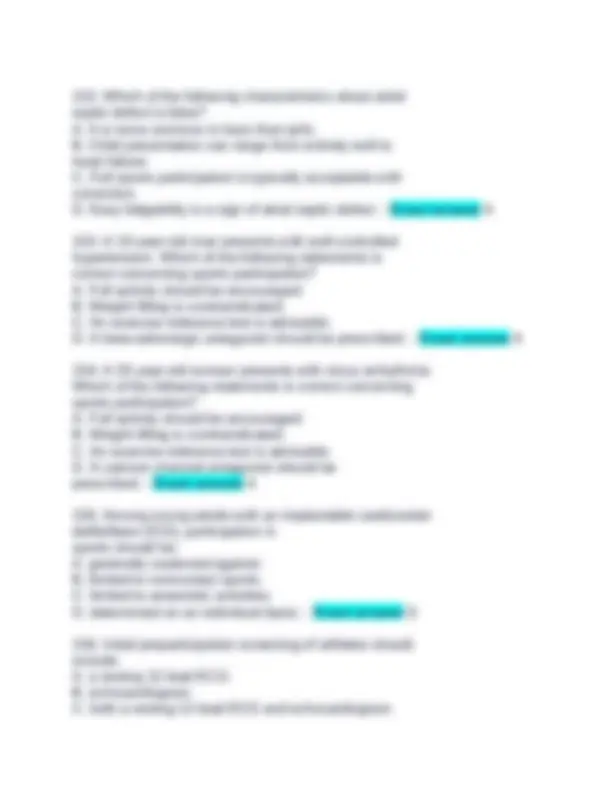
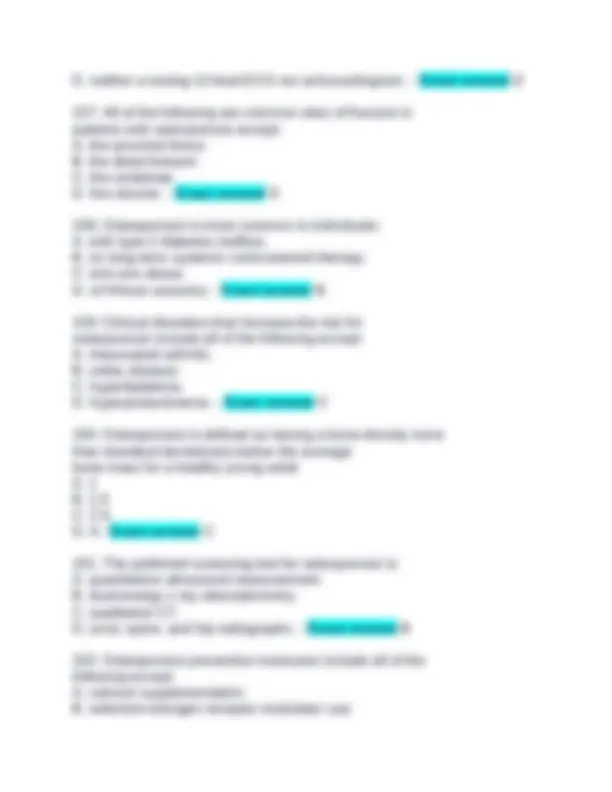
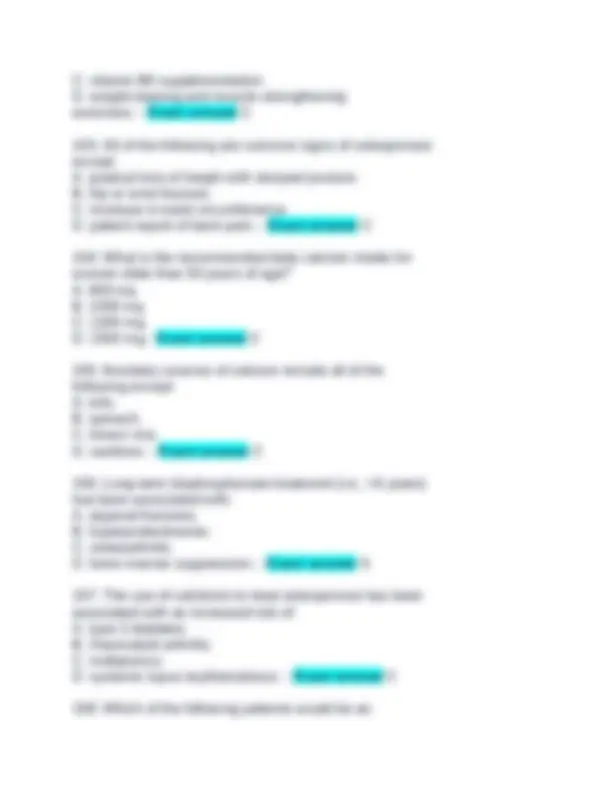
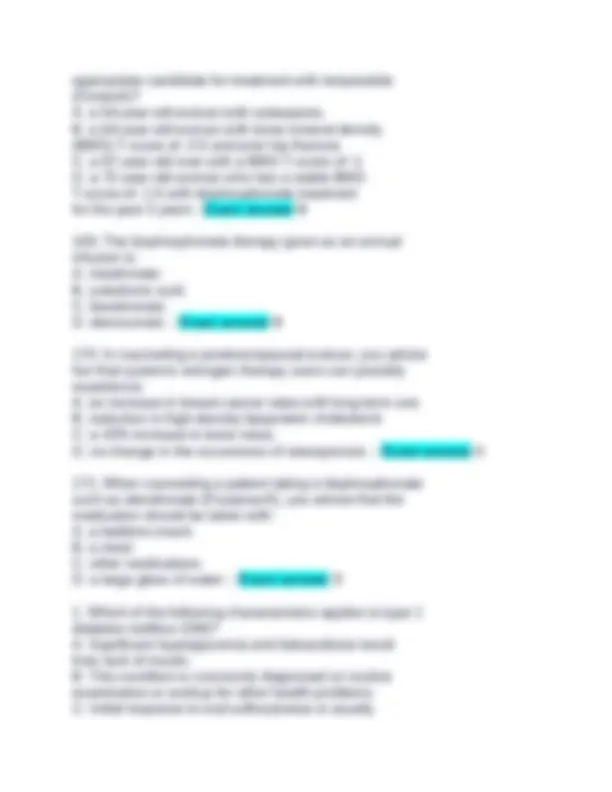
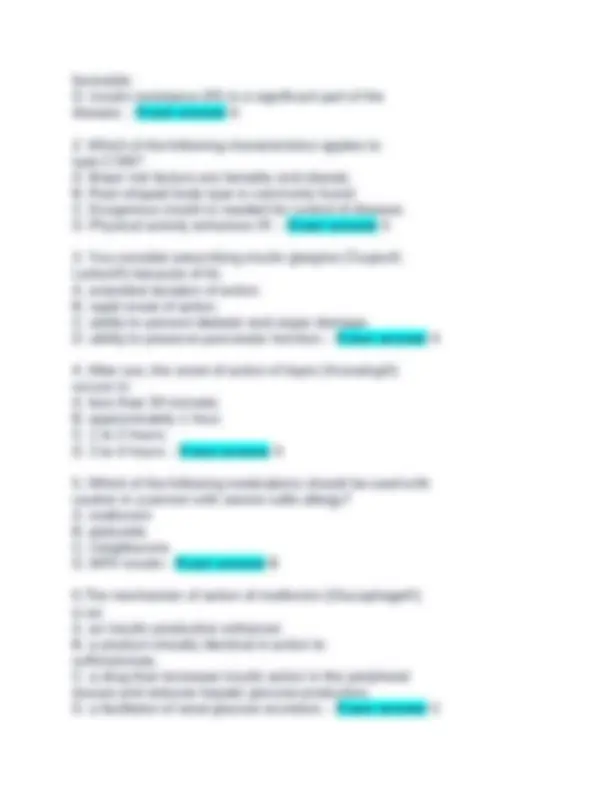
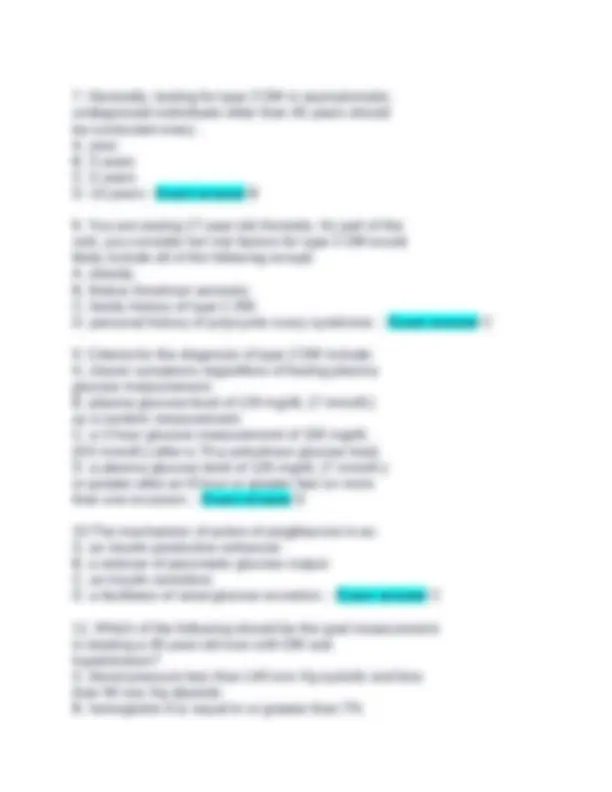
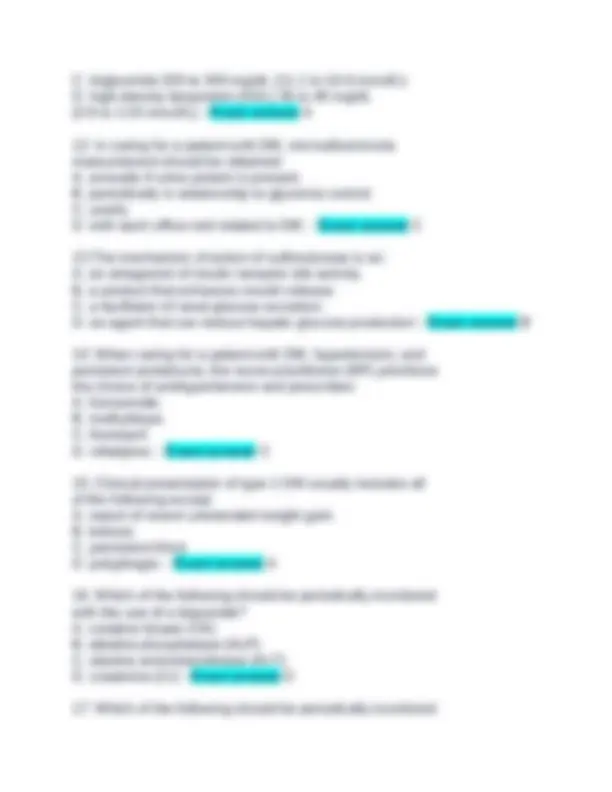
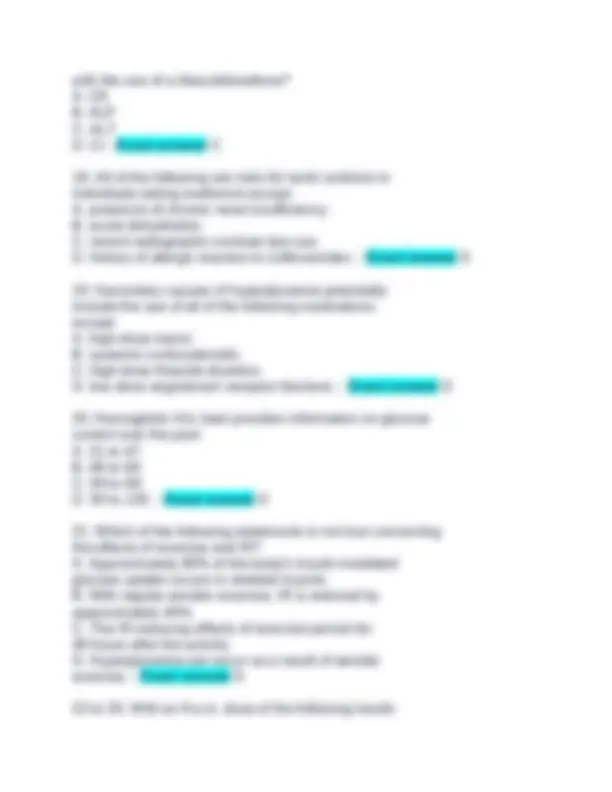
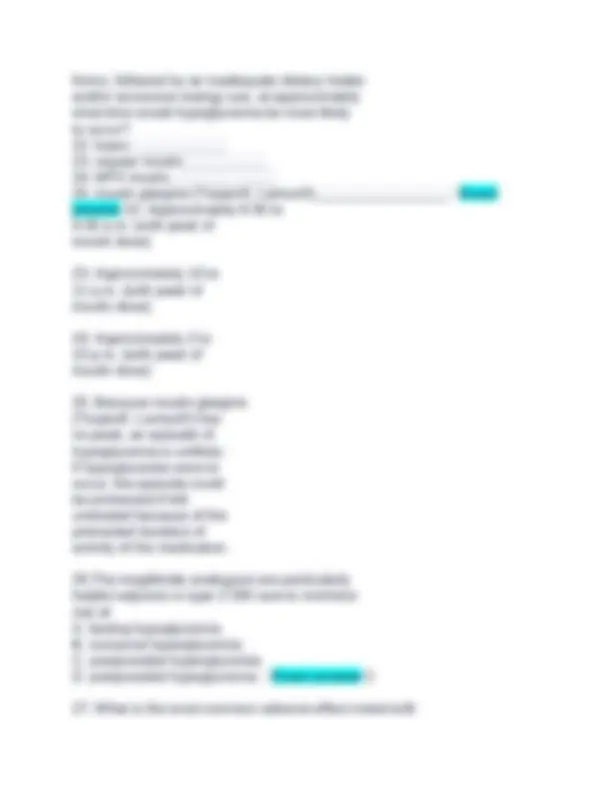
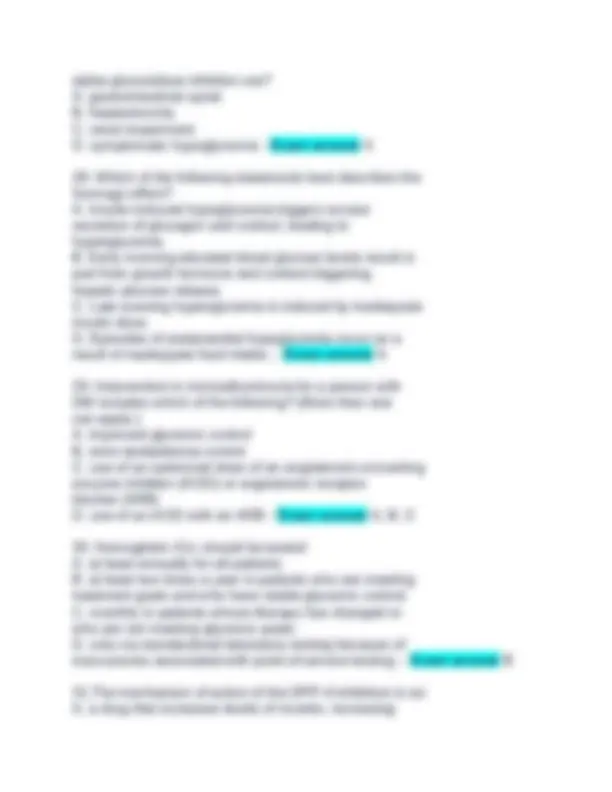
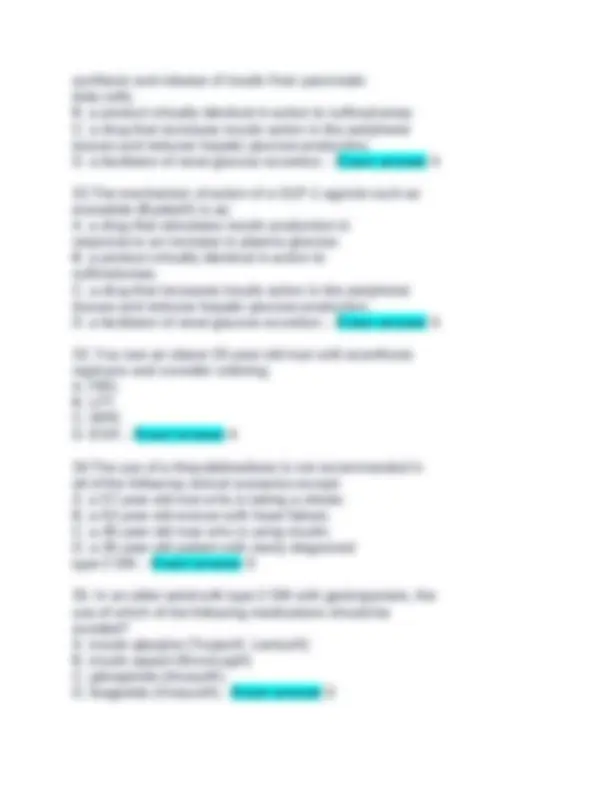
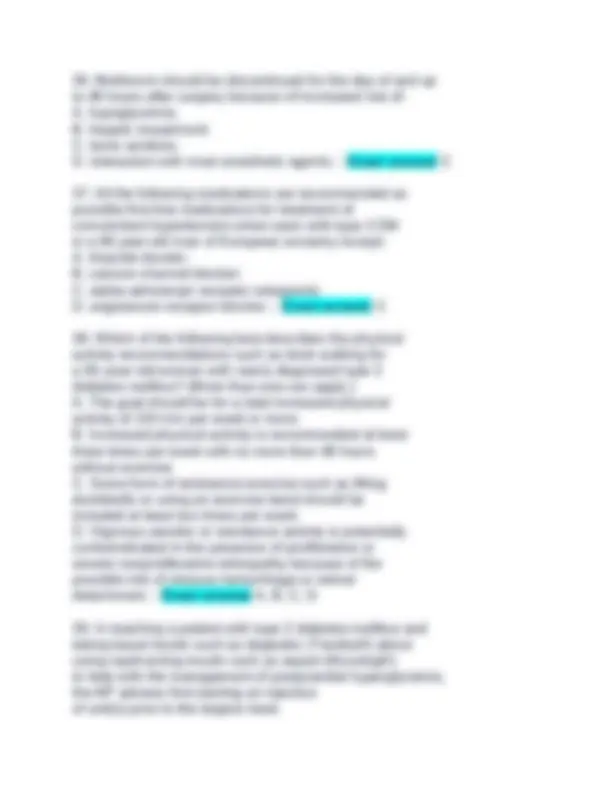
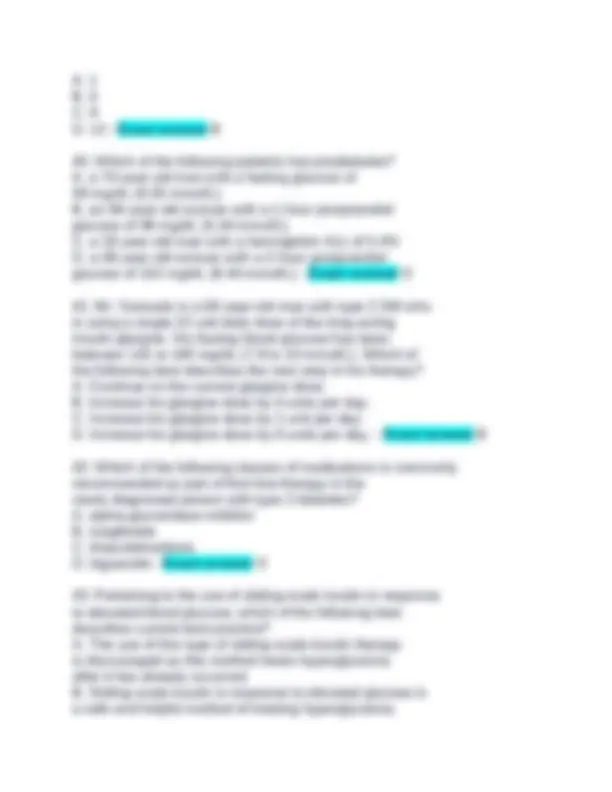
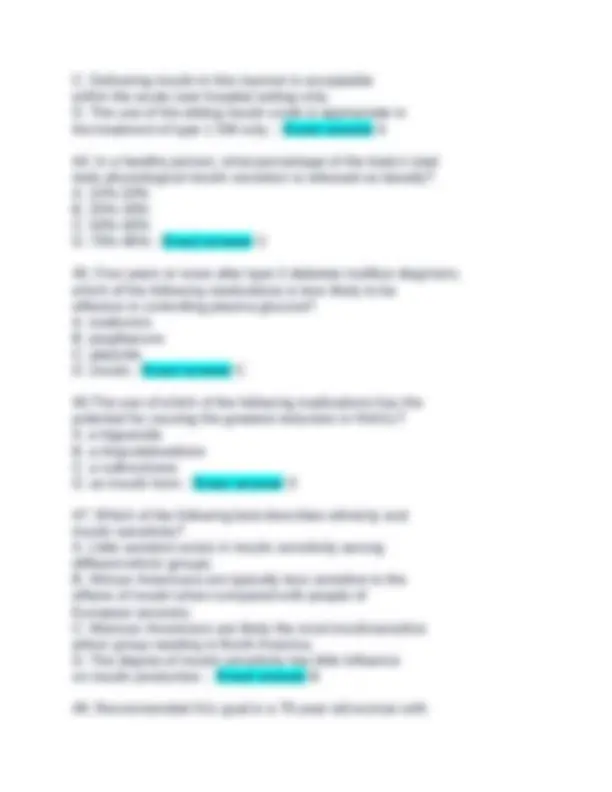
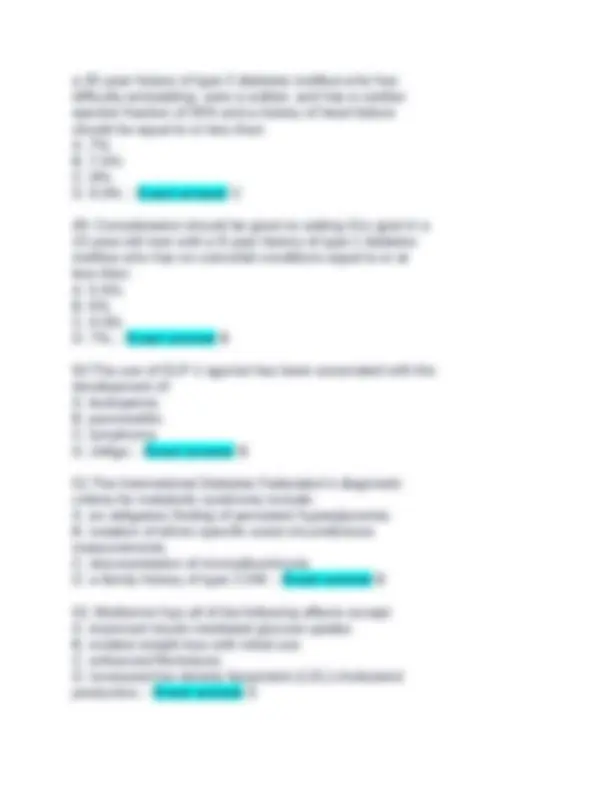
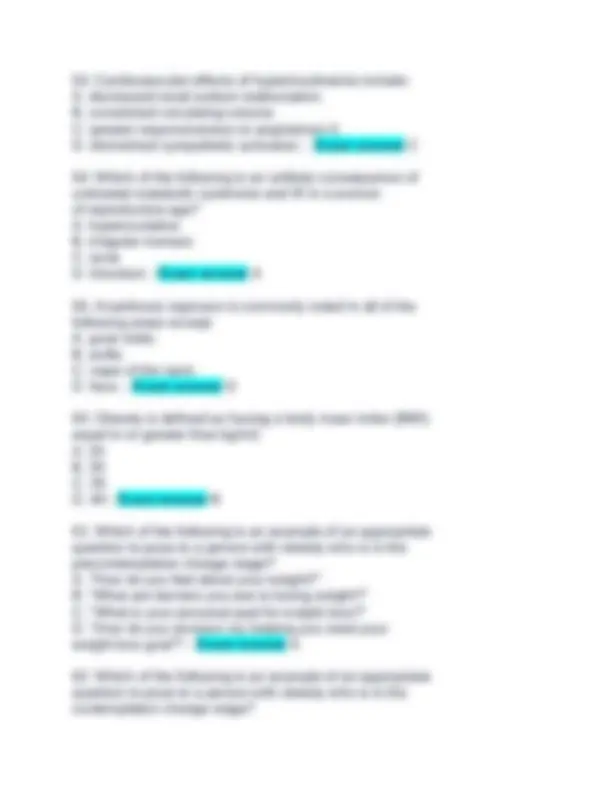
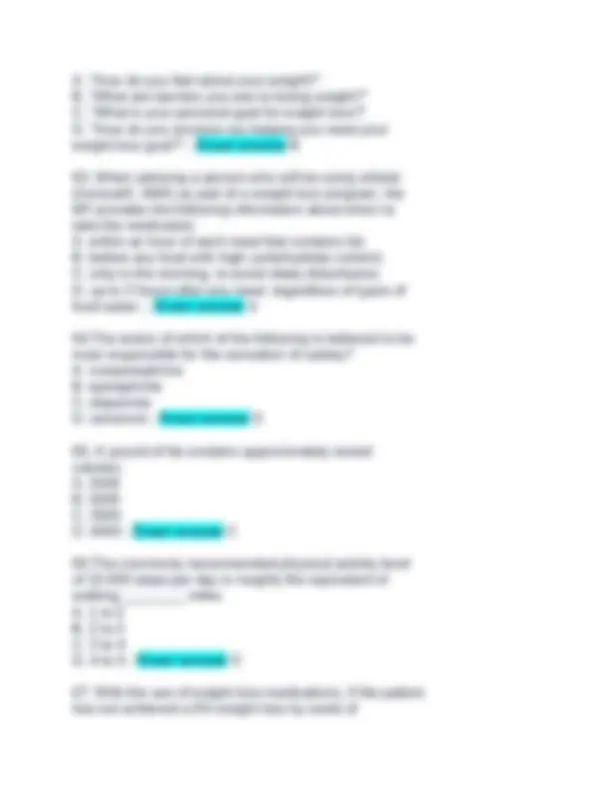

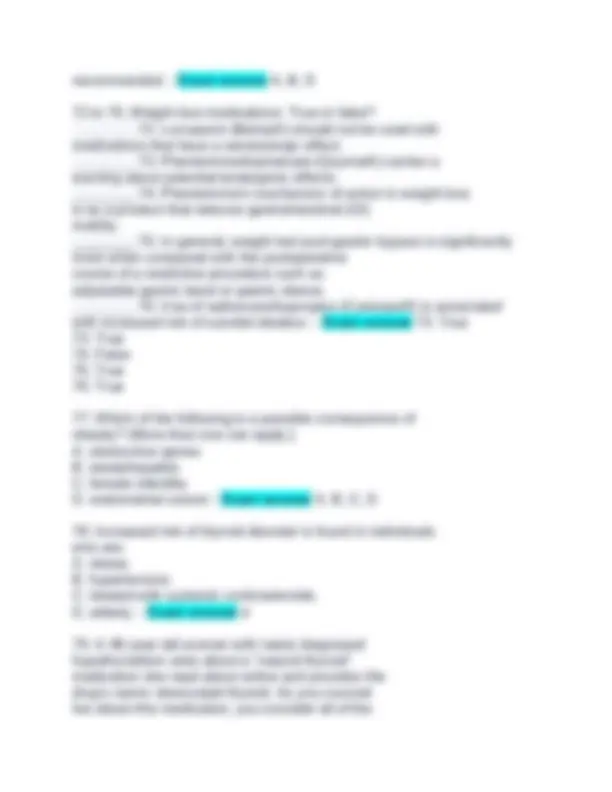
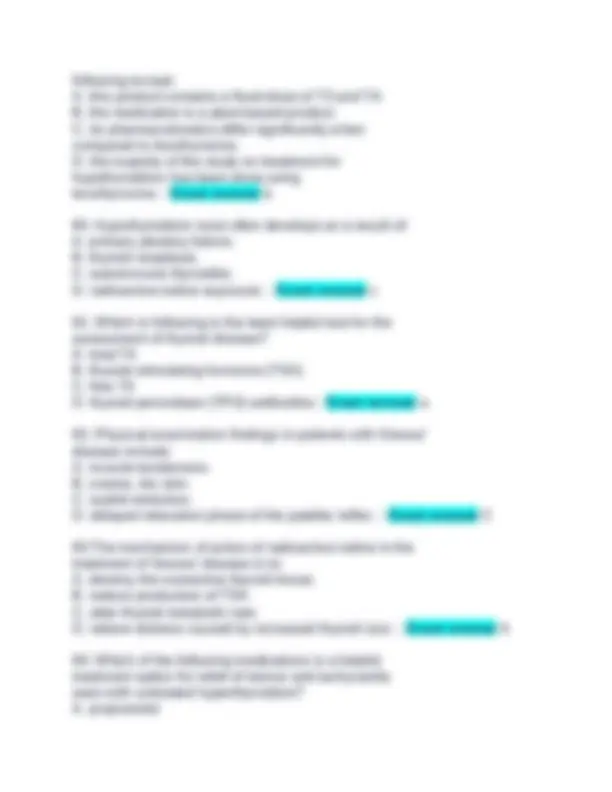
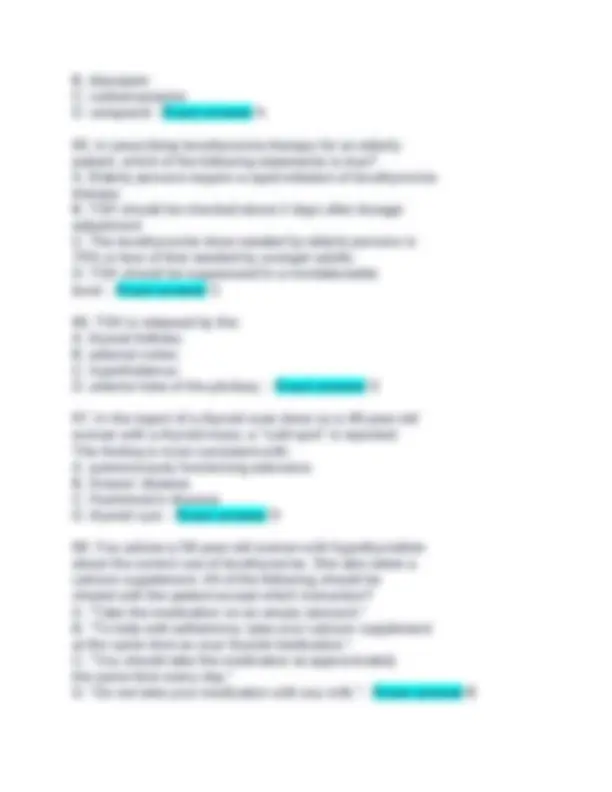
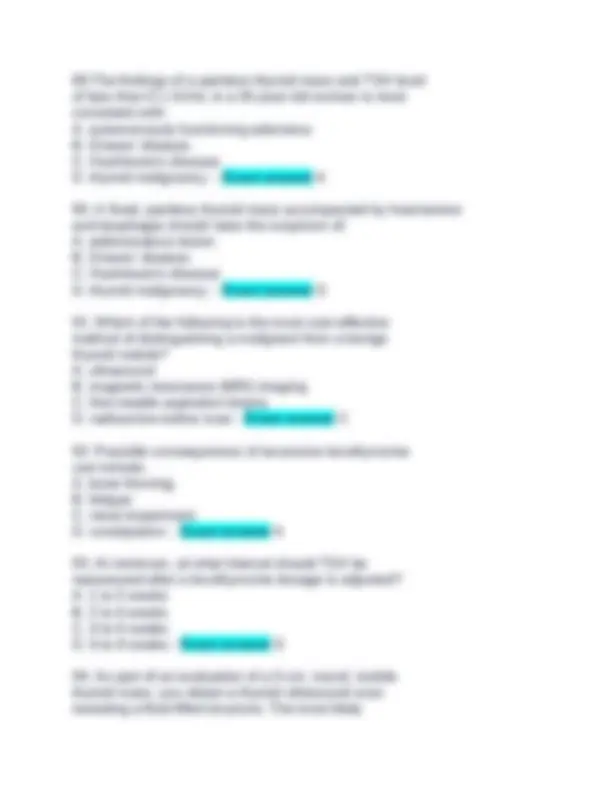
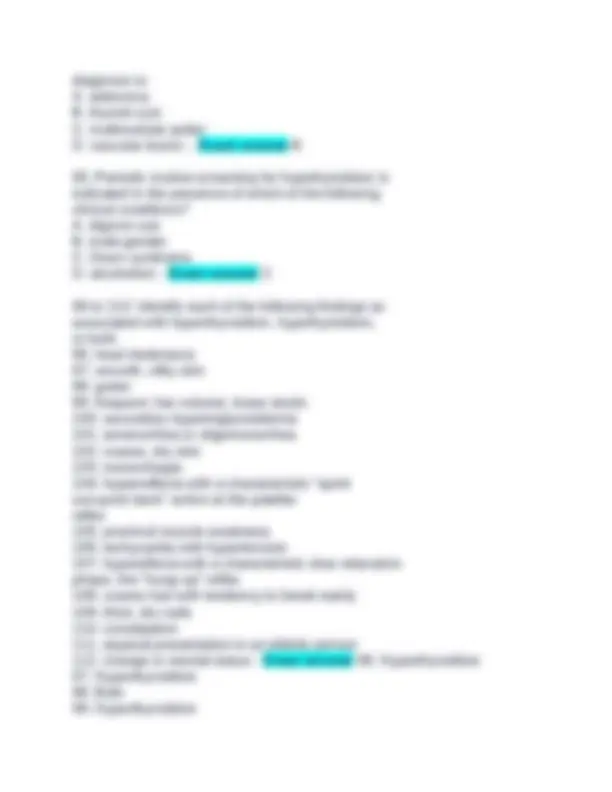
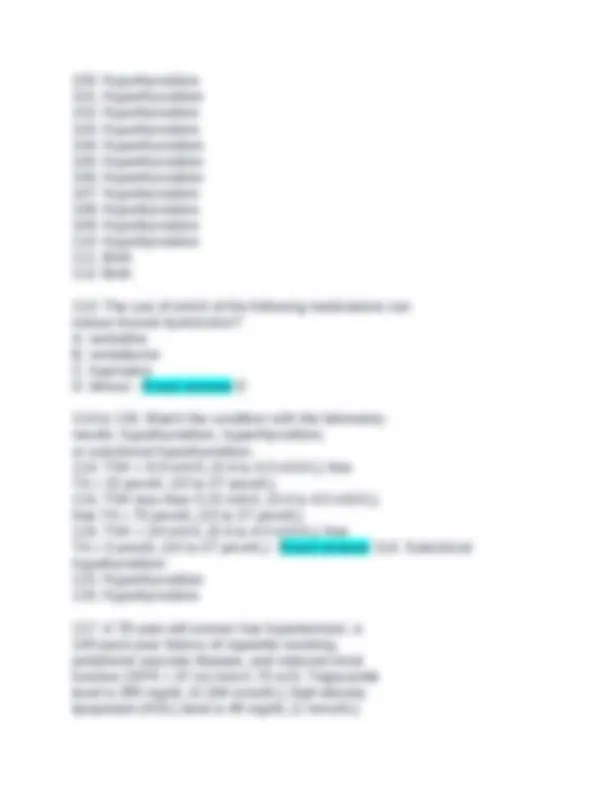
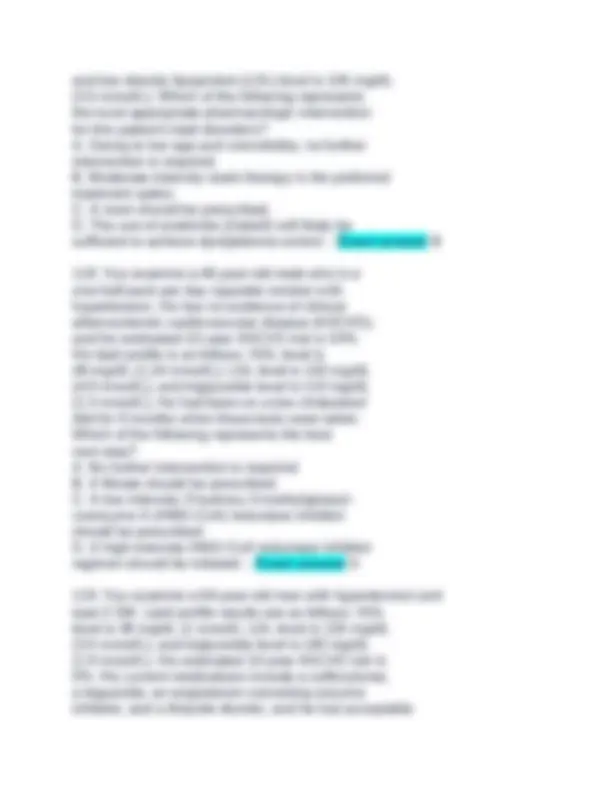


Study with the several resources on Docsity

Earn points by helping other students or get them with a premium plan


Prepare for your exams
Study with the several resources on Docsity

Earn points to download
Earn points by helping other students or get them with a premium plan
Community
Ask the community for help and clear up your study doubts
Discover the best universities in your country according to Docsity users
Free resources
Download our free guides on studying techniques, anxiety management strategies, and thesis advice from Docsity tutors
UPDATED N5334 ADVANCED PHARMACOLOGY EXAM 2 QUESTIONS WITH 100% EXACT ANSWERS 2024 REVISED GRADED A+ . UPDATED N5334 ADVANCED PHARMACOLOGY EXAM 2 QUESTIONS WITH 100% EXACT ANSWERS 2024 REVISED GRADED A+ .
Typology: Exams
1 / 131

This page cannot be seen from the preview
Don't miss anything!





























































































You examine a 38-year-old woman who has presented for an initial examination and Papanicolaou test. She has no complaint. Her blood pressure (BP) is 154/98 mm Hg bilaterally and her body mass index (BMI) is 31 kg/m2. The rest of her physical examination is unremarkable. Your next best action is to: A. initiate antihypertensive therapy. B. arrange for at least two additional BP measurements during the next 2 weeks. C. order blood urea nitrogen, creatinine, and potassium ion measurements and urinalysis. D. advise her to reduce her sodium intake. - Exact answer B You see a 68-year-old woman as a patient who is transferring care into your practice. She has a 10-year history of hypertension, diabetes mellitus, and hyperlipidemia. Current medications include hydrochlorothiazide (HCTZ), glipizide, metformin, simvastatin, and daily low-dose aspirin. Today's BP reading is 158/92 mm Hg, and the rest of her history and examination are unremarkable. Documentation from her former healthcare provider indicates that her BP has been in the range for the past 12 months. Your next best action is to: A. prescribe an angiotensin-converting enzyme inhibitor (ACEI). B. have her return for a BP check in 1 week. C. advise that her current therapy is adequate. D. add therapy with an aldosterone antagonist. - Exact answer A
You examine a 78-year-old woman with long-standing, poorly controlled hypertension. When evaluating her for hypertensive target organ damage, you look for evidence of: A. lipid abnormalities. B. insulin resistance. C. left ventricular hypertrophy. D. clotting disorders. - Exact answer C Diagnostic testing for a patient with newly diagnosed primary hypertension should include all of the following except: A. hematocrit. B. uric acid. C. creatinine. D. potassium. - Exact answer B In the person with hypertension, the nurse practitioner (NP) recommends all of the following to potentially reduce BP in a patient with a BMI of 30 kg/m2 except: A. 10-kg (22-lb) weight loss. B. dietary sodium restriction to 2.4 g (6 g NaCl) per day. C. regular aerobic physical activity, such as 30-40 minutes of brisk walking most days of the week. D. consuming at least 1-2 servings of alcohol. - Exact answer D Match the antihypertension medication with its appropriate class. _______6. amlodipine _______7. diltiazem _______8. trandolapril _______9. telmisartan _______10. pindolol A. beta-adrenergic receptor antagonist B. nondihydropyridine
D. Obtaining the BP reading immediately after the patient walks into the examination room is recommended. - Exact answer A A BP elevation noted only at an office visit is commonly known as hypertension. A. provider-induced B. clinical C. white coat D. pseudo - Exact answer C The most important long-term goal of treating hypertension is to: A. strive to reach recommended numeric BP measurement. B. avoid disease-related target organ damage. C. develop a plan of care with minimal adverse effects. D. treat concomitant health problems often noted in the person with this condition. - Exact answer B You start a patient with hypertension who is already receiving an ACEI on spironolactone. You advise the patient to return in 4 weeks to check which of the following laboratory parameters? A. sodium B. calcium C. potassium D. chloride - Exact answer C A 68-year-old woman presents with hypertension and BP of 152-158/92-96 mm Hg documented over 2 months on three different occasions. Electrocardiogram (ECG) and creatinine are normal, and she has no proteinuria. Clinical findings include the following: BMI 26.4 kg/m2; no S3, S4, or murmur; and point of maximal impulse at fifth intercostal space, mid-clavicular line. Which of the following represents the best intervention? A. Initiate therapy with metoprolol. B. Initiate therapy with hydrochlorothiazide. C. Initiate therapy with methyldopa.
D. Continue to monitor BP, and start drug therapy if evidence of target organ damage. - Exact answer B Which of the following can have a favorable effect on a comorbid condition in a person with hypertension? A. chlorthalidone in gout B. propranolol with airway disease C. aldosterone antagonist in heart failure D. methyldopa in an older adult - Exact answer C According to JNC-8 guidelines, all of the following medications are first-line agents for use in a middle-aged white man without diabetes mellitus except: A. lisinopril. B. hydrochlorothiazide. C. metoprolol. D. amlodipine. - Exact answer C You see a 59-year-old man with poorly controlled hypertension. On physical examination, you note grade 1 hypertensive retinopathy. You anticipate all of the following will be present except: A. patient report of acute visual change. B. narrowing of the terminal arterioles. C. sharp optic disc borders. D. absence of retinal hemorrhage. - Exact answer A According to JNC-8, a 52-year-old well woman with a healthy BMI whose blood pressure is consistently 130-135/82-86 mm Hg is considered to have: A. normal blood pressure. B. hypertension requiring therapy with a calcium channel blocker (CCB). C. hypertension requiring therapy with an alpha blocker. D. hypertension requiring therapy with a thiazide-type diuretic. - Exact answer A
with CKD _______27. a 62-year-old female with no history of DM or CKD _______28. an 82-year-old male with no history of DM or CKD _______29. a 72-year-old female with DM and CKD - Exact answer 24. C.
patients with hypertension, which of the following medications have a compelling indication for use in the following patient conditions? (The medications listed can be used more than once. A given condition can have more than one medication indicated.) A. thiazide diuretic B. beta blocker C. ACEI D. ARB E. aldosterone antagonist F. calcium channel blocker _______32. heart failure _______33. diabetes mellitus _______34. angina pectoris B _______35. coronary artery disease _______36. aortic aneurysm _______37. recurrent stroke prevention - Exact answer 32. A, B, C, D, E, F.
the next step in obtaining a diagnostic procedure usually includes a: A. ventilation perfusion scan. B. echocardiogram. C. pulmonary artery angiography. D. cardiac computerized tomography (CT) scan. - Exact answer B
A. urine culture. B. blood culture. C. chest x-ray. D. myocardial biopsy. - Exact answer B
D. inadequate cardiac output to meet oxygen and metabolic demands of the body. - Exact answer D
A. shortened PR interval. B. slightly depressed, cupped ST segments. C. widened QRS complex. D. tall T waves. - Exact answer B
A. should only be used in the presence of a medical professional. B. provide a convenient method to check lung function at home. C. are as accurate as spirometry. D. should not be used more than once daily. - Exact answer B